Frank Lloyd Wright
Johnson Wax Headquarters
1936–1939
Johnson Wax Headquarters is the world headquarters and administration building of S. C. Johnson & Son in Racine, Wisconsin. Designed by American architect Frank Lloyd Wright for the company’s president, Herbert F. “Hib” Johnson, the building was constructed from 1936 to 1939. Its distinctive “lily pad” columns and other innovations revived Wright’s career at a point when he was losing influence. Also known as the Johnson Wax Administration Building, it and the nearby 14-story Johnson Wax Research Tower (built 1944–1950) were designated as a National Historic Landmark in 1976 as Administration Building and Research Tower, S.C. Johnson and Son.
The Johnson Wax Headquarters were set in an industrial zone and Wright decided to create a sealed environment lit from above, as he had done with the Larkin Administration Building. The building features Wright’s interpretation of the streamlined Art Moderne style popular in the 1930s. In a break with Wright’s earlier Prairie School structures, the building features many curvilinear forms and subsequently required over 200 different curved “Cherokee red” bricks to create the sweeping curves of the interior and exterior. The mortar between the bricks is raked in traditional Wright-style to accentuate the horizontality of the building. The warm, reddish hue of the bricks was used in the polished concrete floor slab as well; the white stone trim and white dendriform columns create a subtle yet striking contrast. All of the furniture, manufactured by Steelcase, was designed for the building by Wright and it mirrored many of the building’s unique design features.
The entrance is within the structure, penetrating the building on one side with a covered carport on the other. The carport is supported by short versions of the steel-reinforced dendriform (tree-like) concrete columns that appear in the Great Workroom. The low carport ceiling creates a compression of space that later expands when entering the main building where the dendriform columns rise over two stories tall. This rise in height as one enters the administration building creates a release of spatial compression making the space seem much larger than it is. Compression and release of space were concepts that Wright used in many of his designs, including the playroom in his Oak Park Home and Studio, the Unity Temple in Oak Park, Illinois, the Solomon R. Guggenheim Museum in New York City, and many others.
Throughout the “Great Workroom,” a series of the thin, white dendriform columns rise to spread out at the top, forming a ceiling, the spaces in between the circles are set with skylights made of Pyrex glass tubing. At the corners, where the walls usually meet the ceiling, the glass tubes continue up, over and connect to the skylights creating a clerestory effect and letting in a pleasant soft light. The Great Workroom is the largest expanse of space in the Johnson Wax Building, and it features no internal walls. It was originally intended for the secretaries of the Johnson Wax company, while a mezzanine holds the administrators.
The construction of the Johnson Wax building created controversies for the architect. In the Great Workroom, the dendriform columns are 9 inches (23 cm) in diameter at the bottom and 18 feet (550 cm) in diameter at the top, on a wide, round platform that Wright termed the “lily pad.” This difference in diameter between the bottom and top of the column did not accord with building codes at the time; they deemed the pillar’s dimensions too slender at the base to support the weight. Building inspectors required that a test column be built and loaded with twelve tons of material. The test column, once it was built, was not only tough enough to support the requested weight but Wright insisted that it be loaded with fivefold the weight. It took sixty tons of materials before the “calyx,” the part of the column that meets the lily pad, cracked (and even then, only collapsing when the wooden beams supporting the “lily-pad” were removed; crashing the 60 tons of materials to the ground, even damaging a water main 30 feet underground). After this demonstration, a vindicated Wright was given his building permit.
Additionally, it was very difficult to properly seal the glass tubing of the clerestories and roof, thus causing leaks. This problem was not solved until the company replaced the top layers of tubes with skylights of angled sheets of fiberglass and specially molded sheets of Plexiglas with painted dark lines to resemble in a ‘trompe l’oeil’ the original joints when viewed from the ground. And finally, Wright’s chair design for Johnson Wax originally had only three legs, supposedly to encourage better posture (because one would have to keep both feet on the ground at all times to sit in it). However, the chair design proved too unstable, tipping very easily. Herbert Johnson, needing a new chair design, purportedly asked Wright to sit in one of the three-legged chairs and, after Wright fell from the chair, the architect agreed to design new chairs for Johnson Wax with four legs; these chairs, and the other office furniture designed by Wright, are still in use to this day.
Despite these problems, Johnson was pleased with the building design and later commissioned the Research Tower and a house from Wright known as Wingspread.
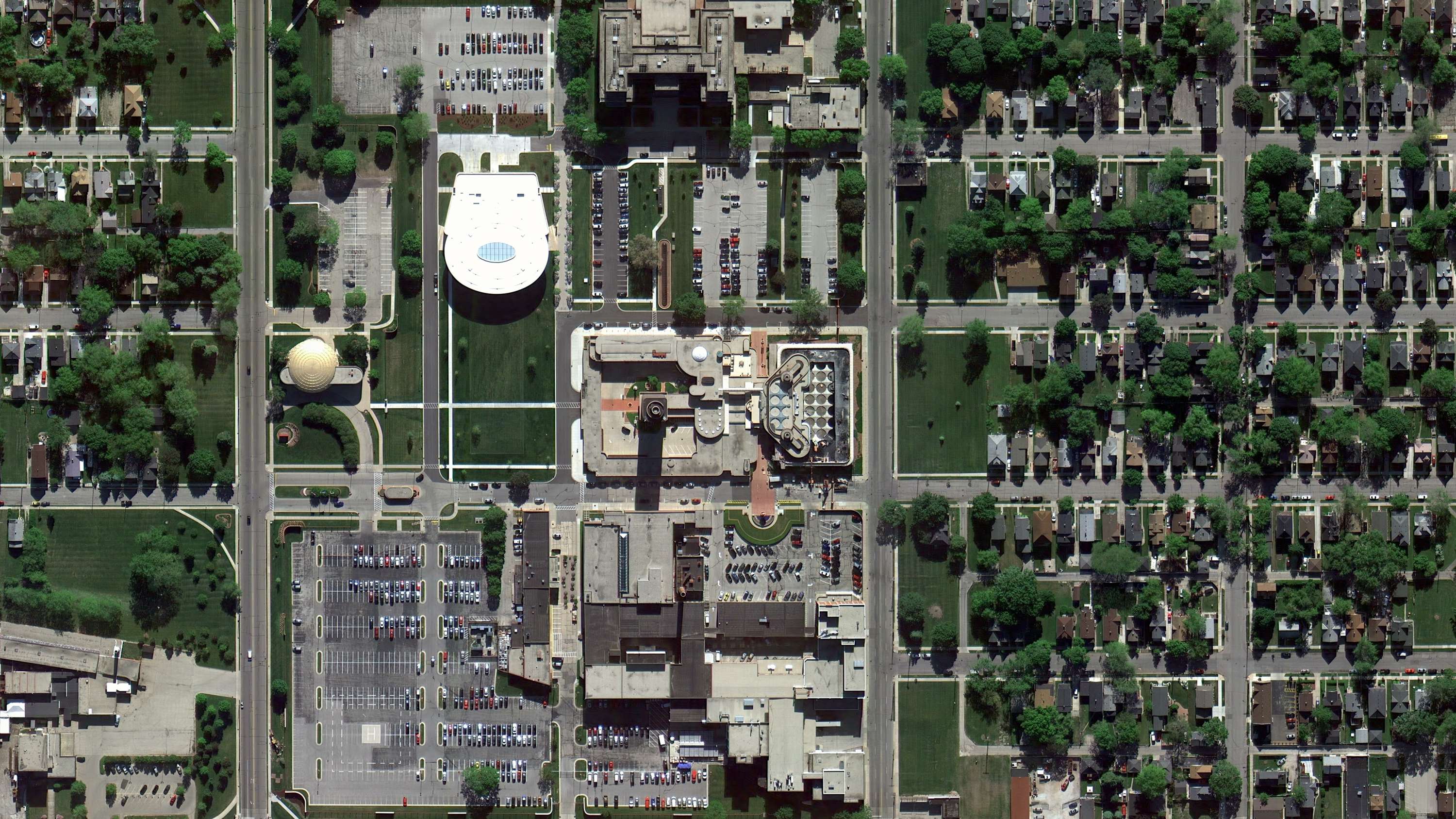
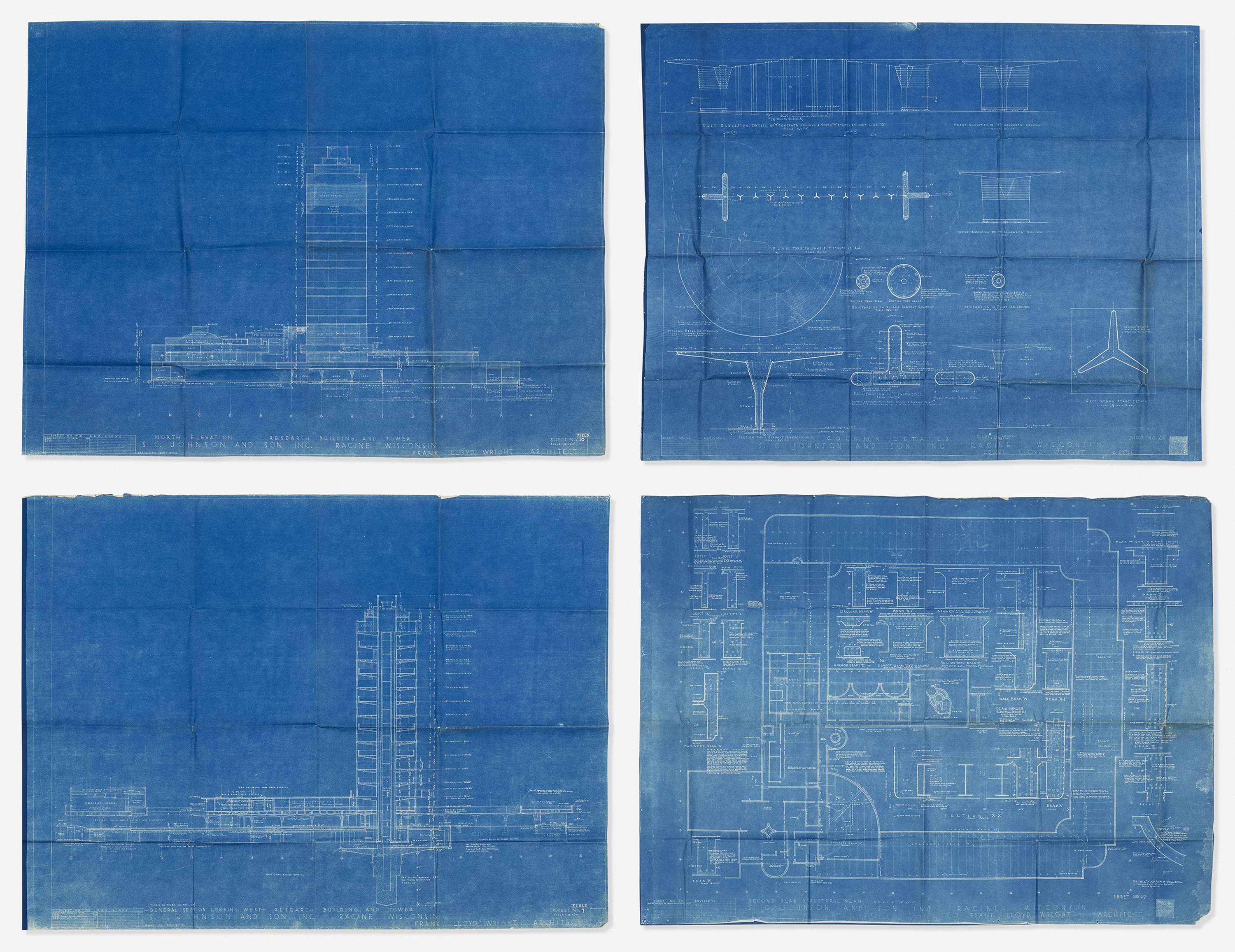
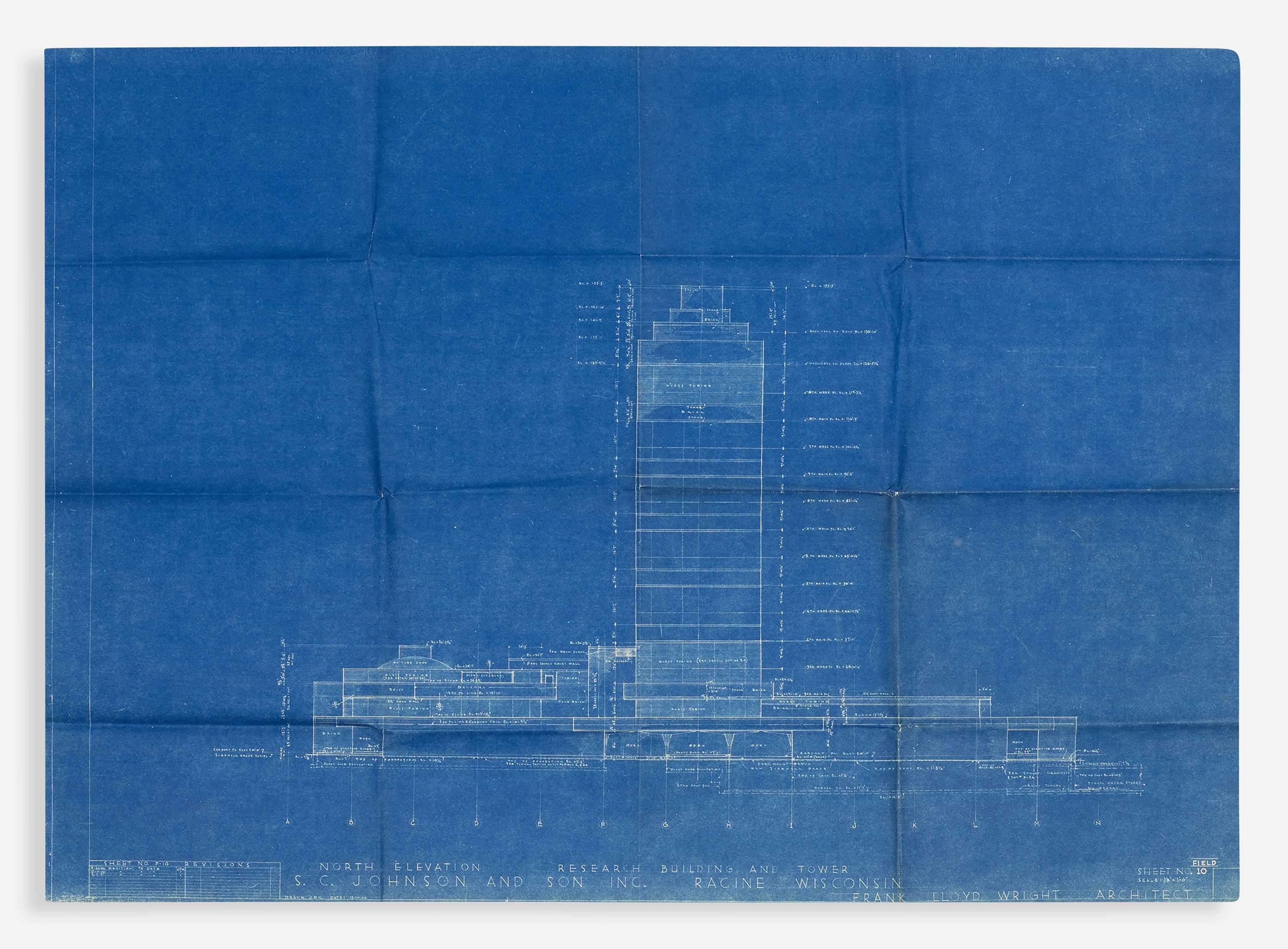
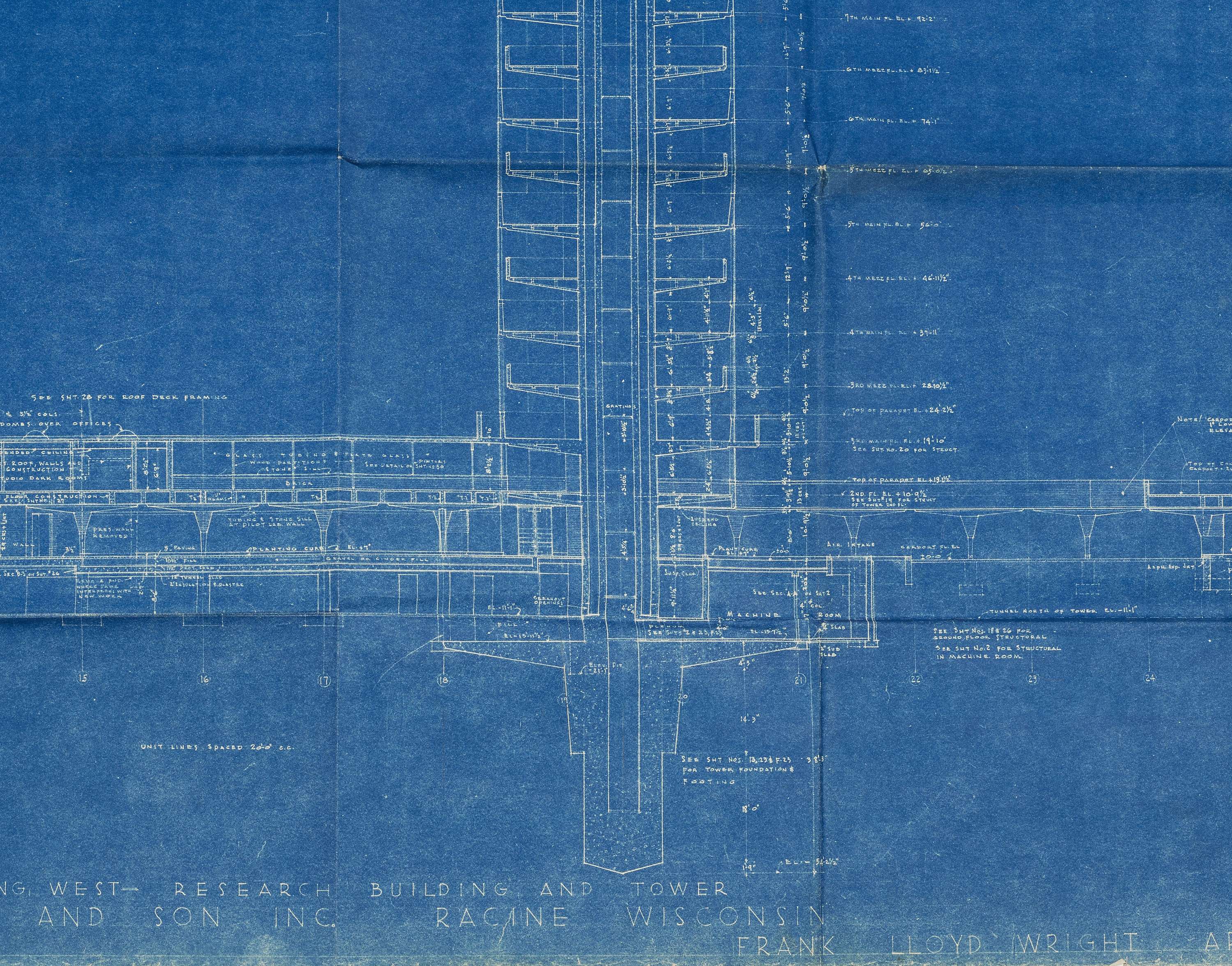
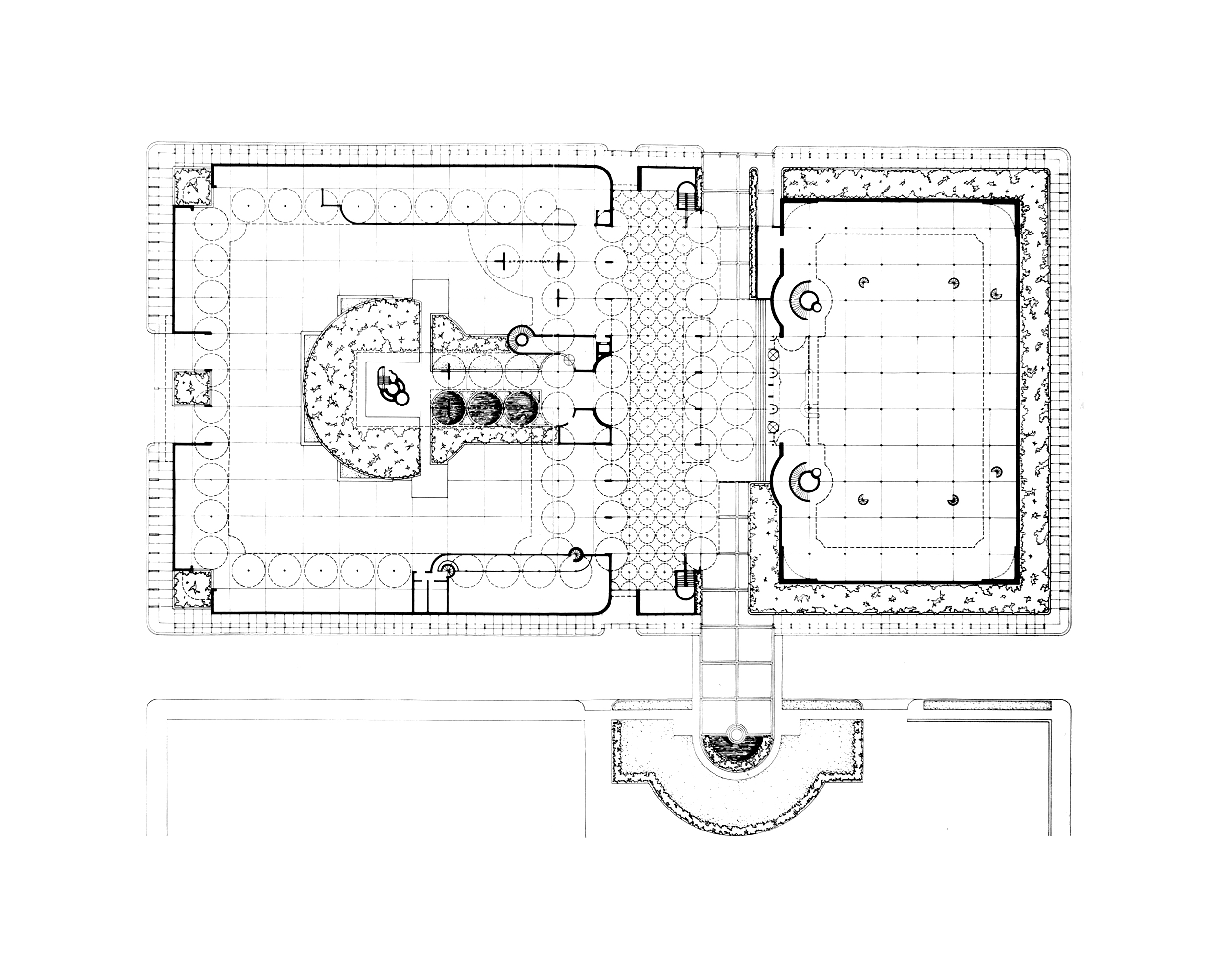
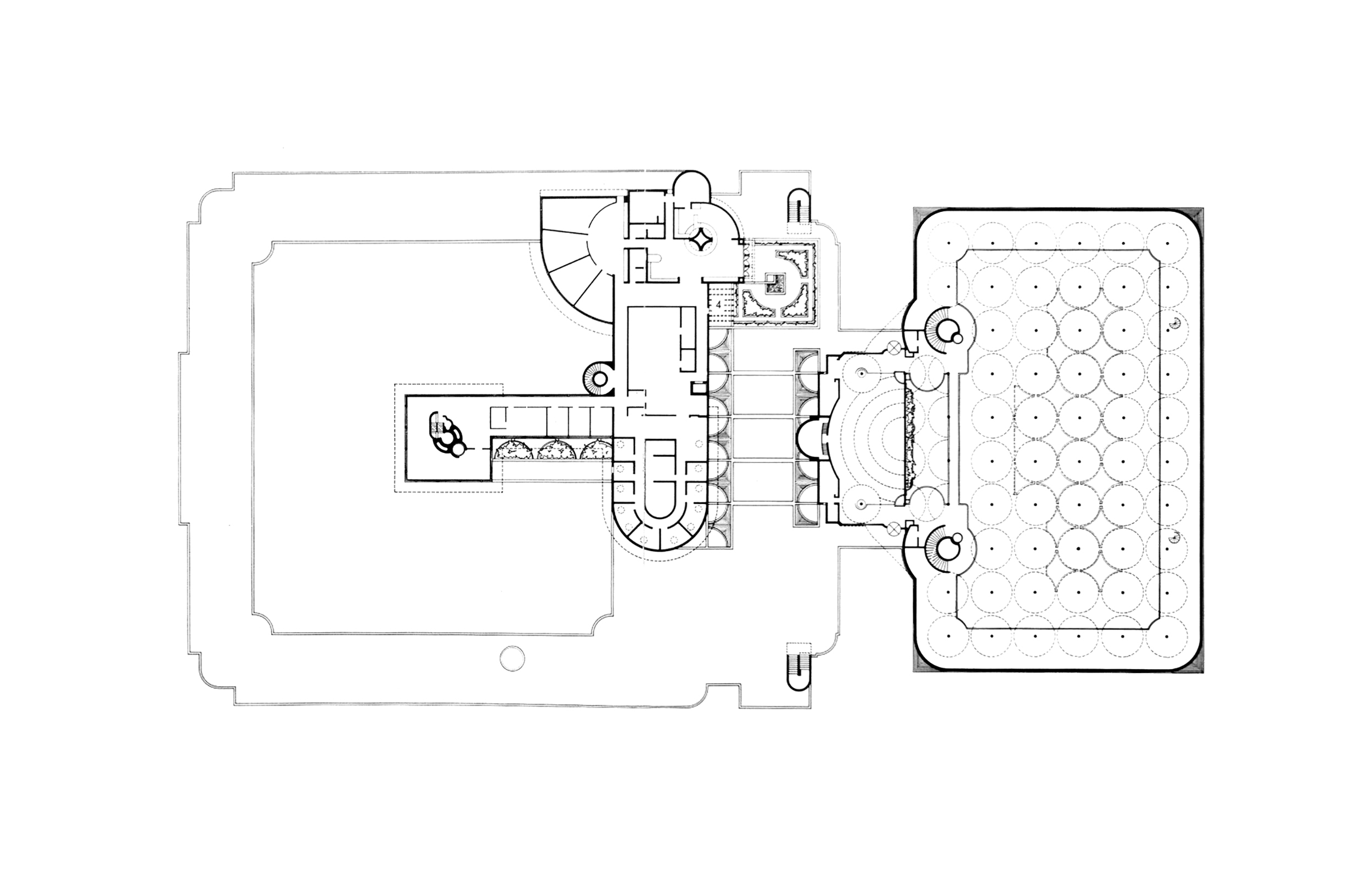
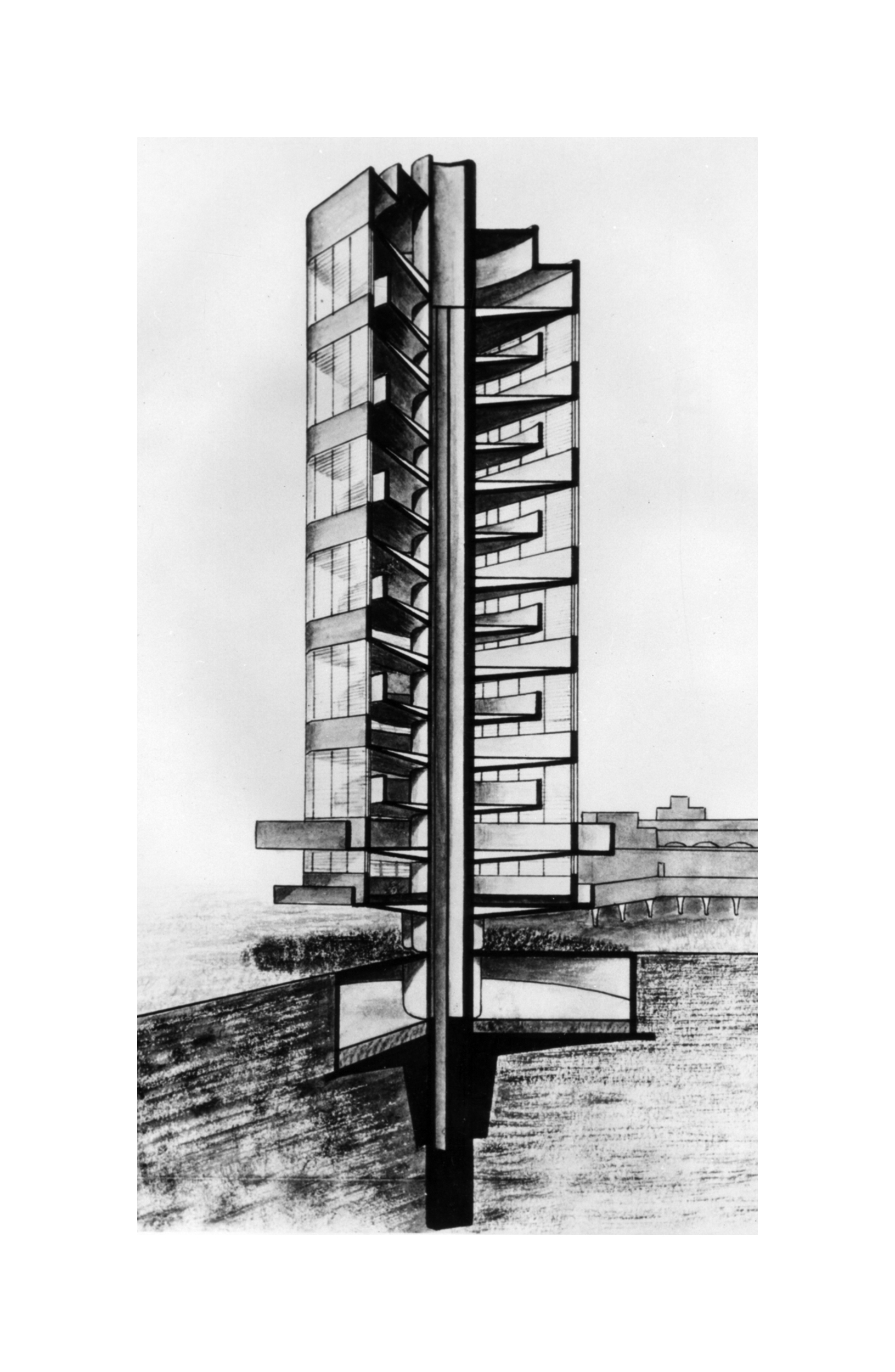
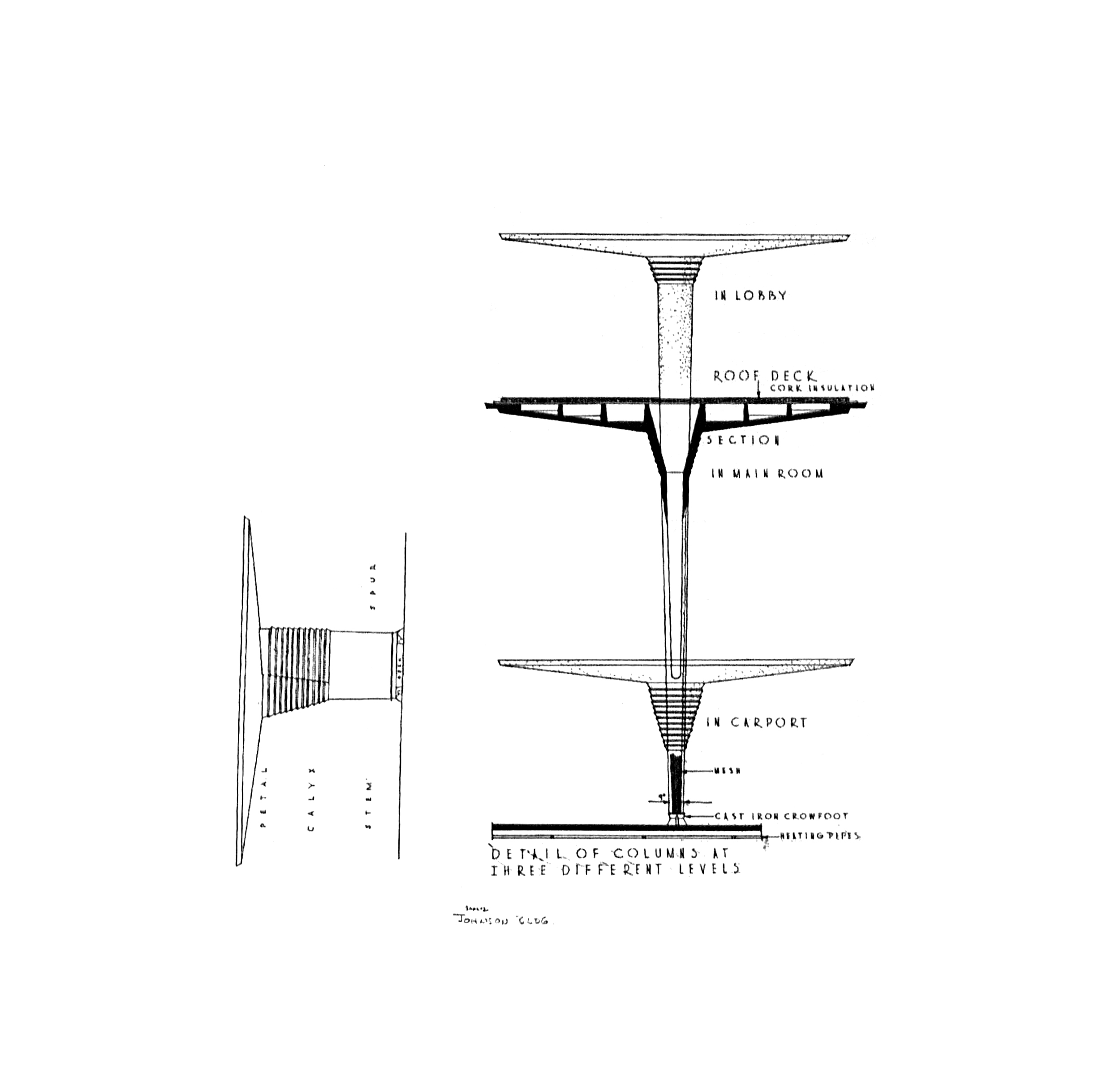
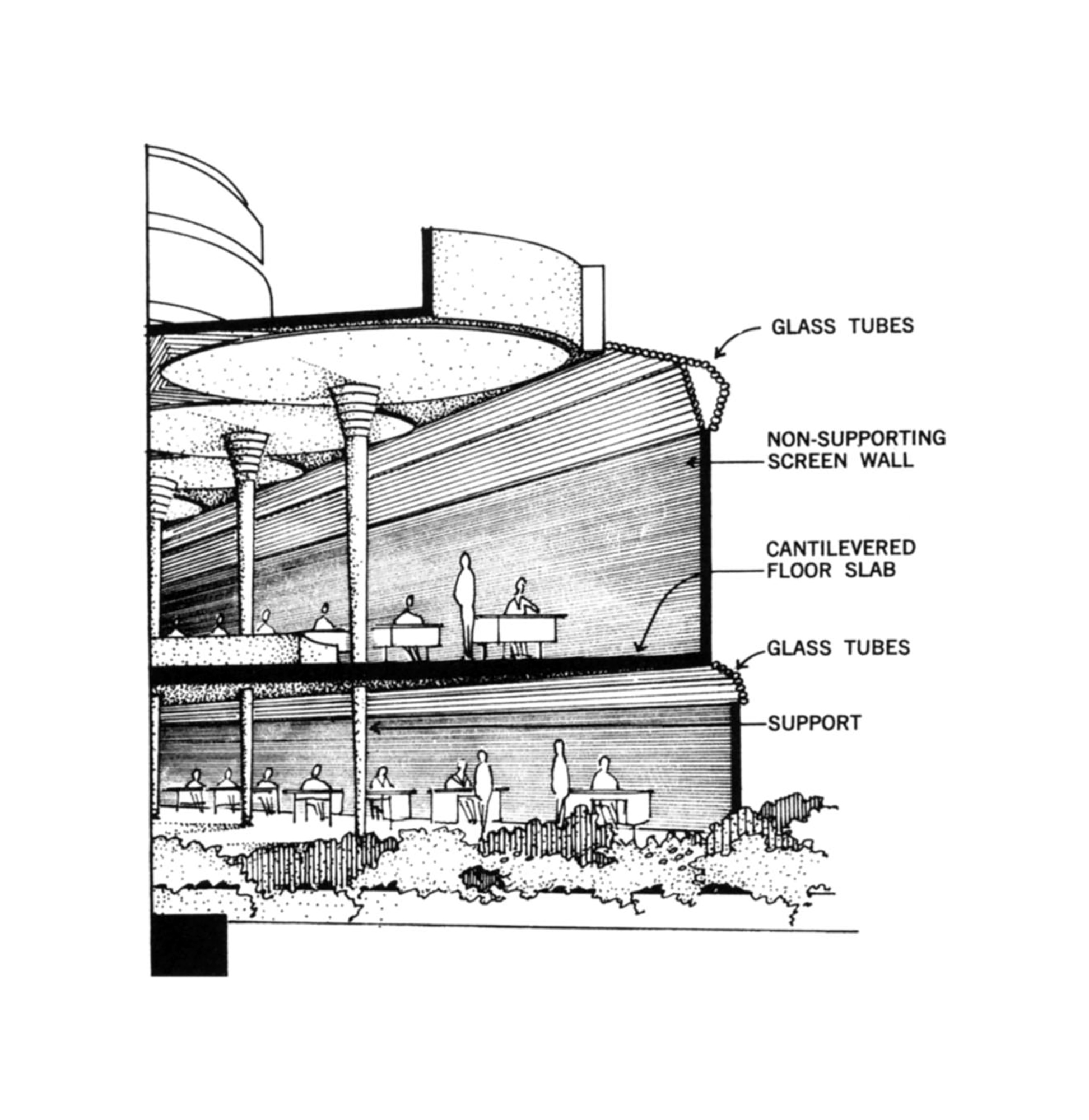
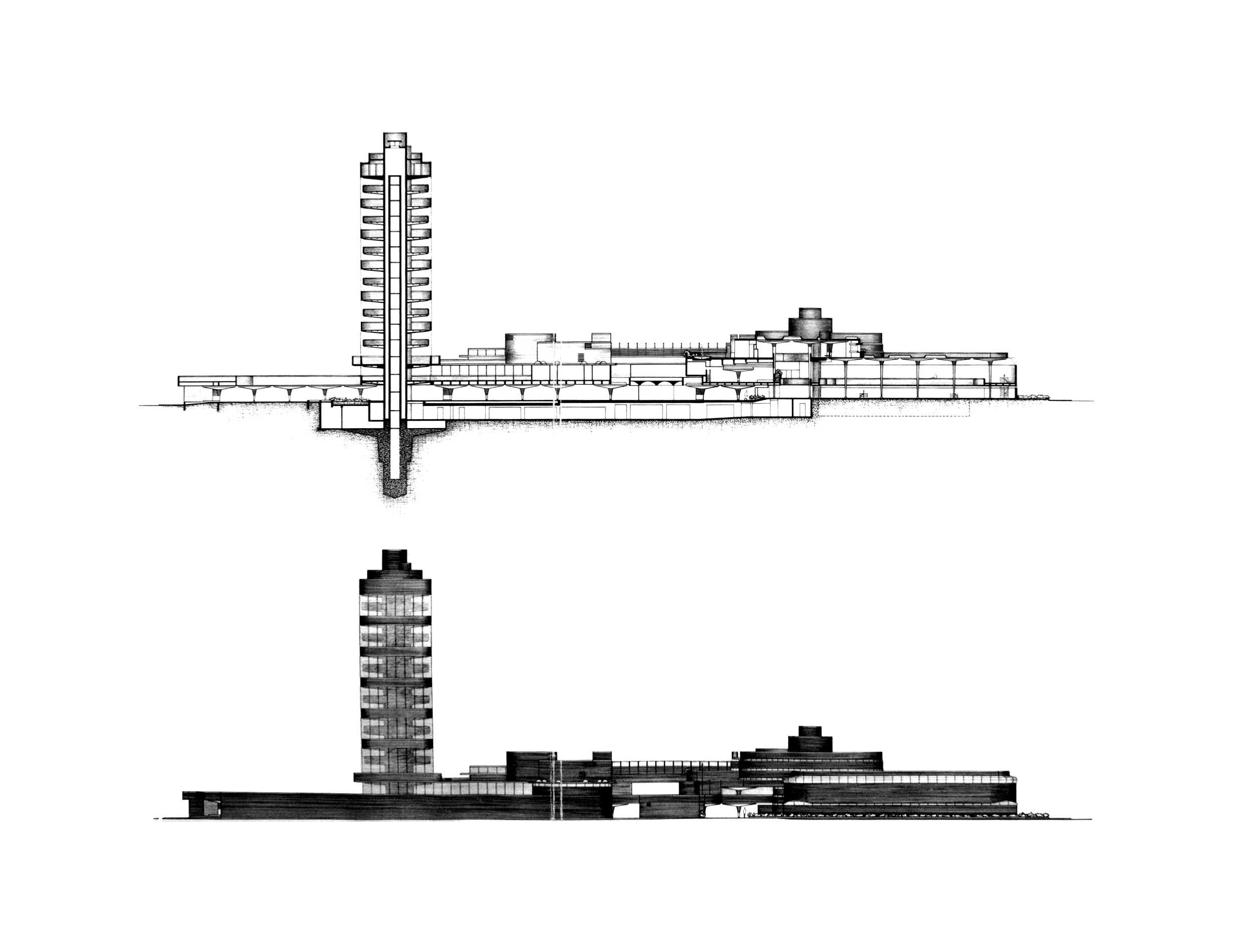
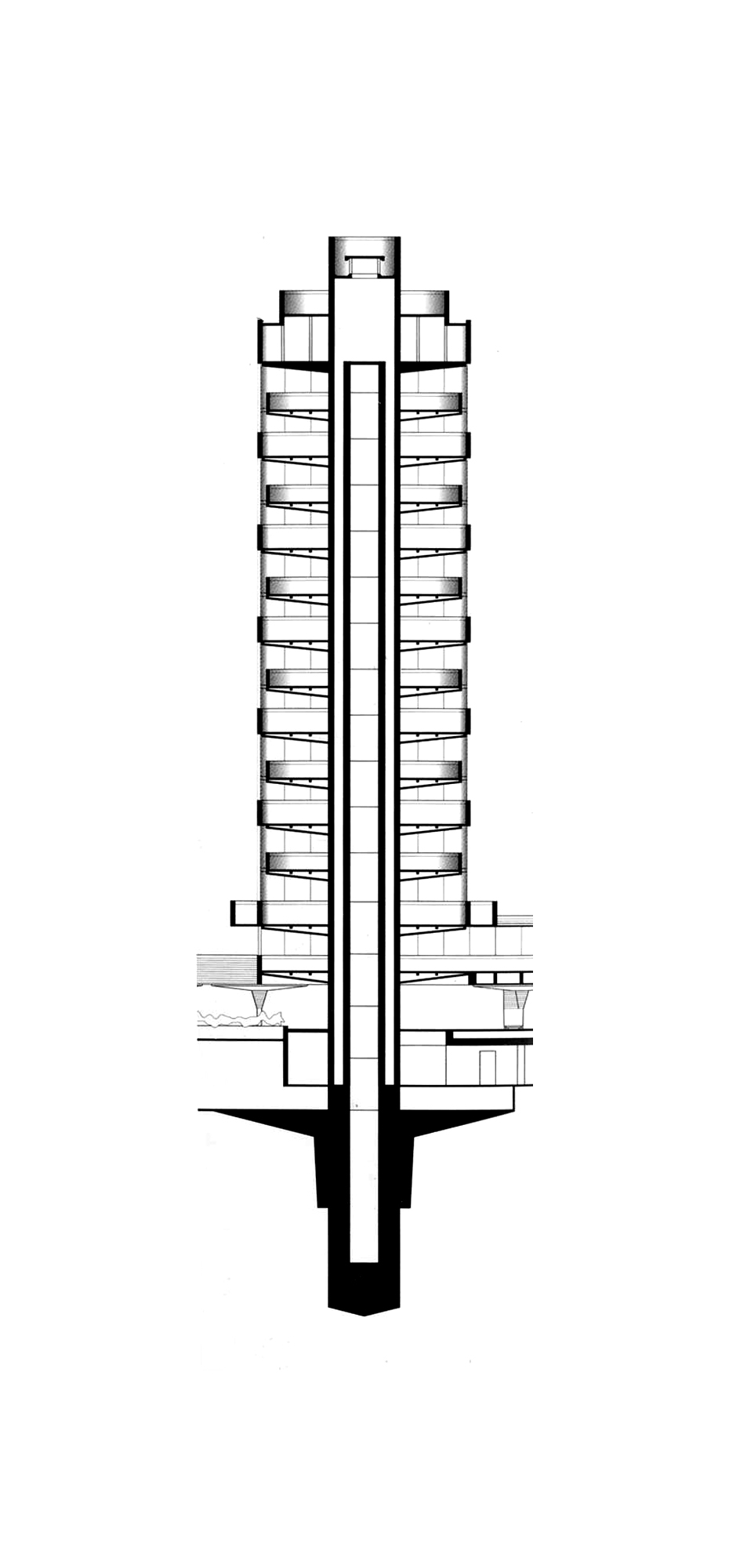
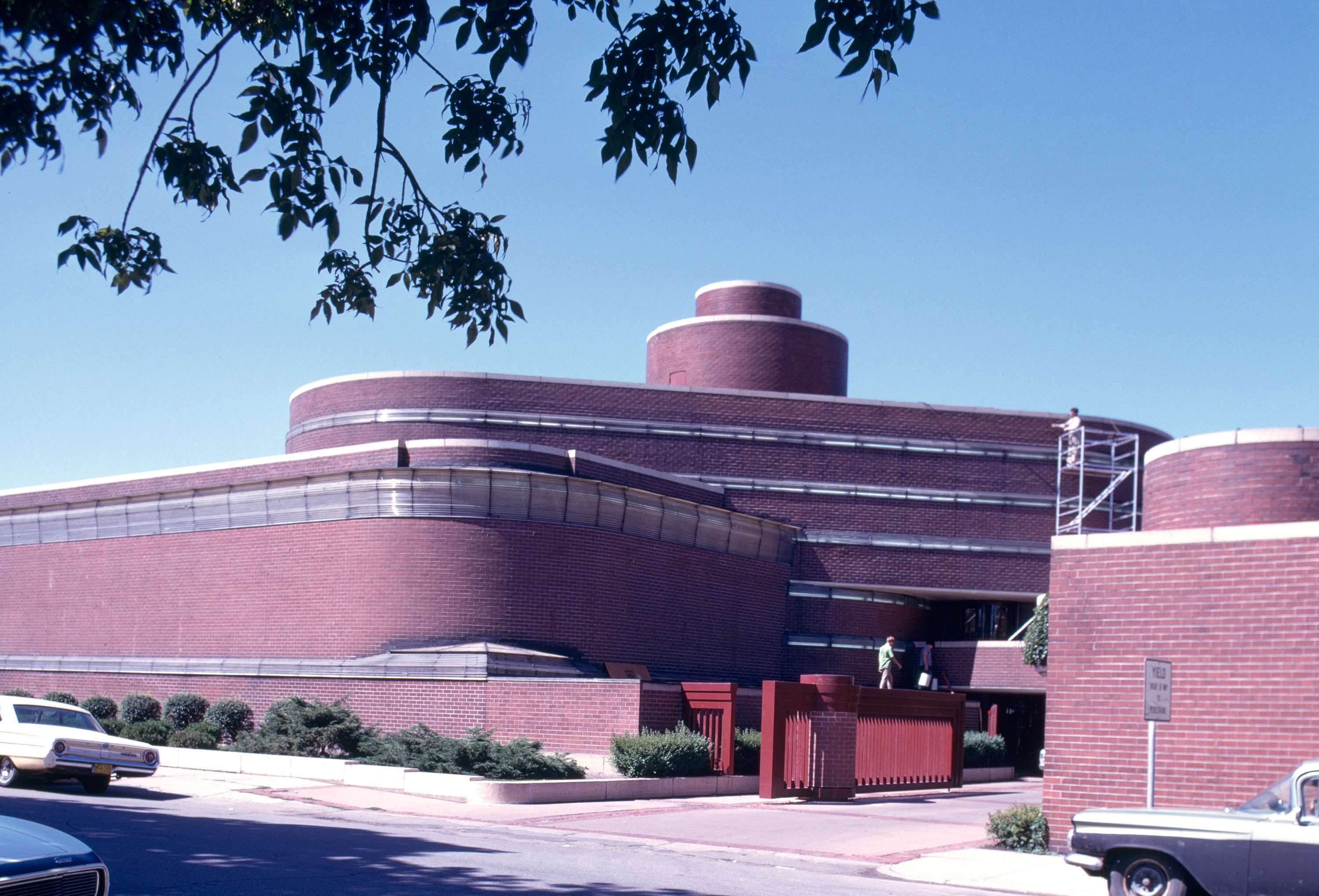
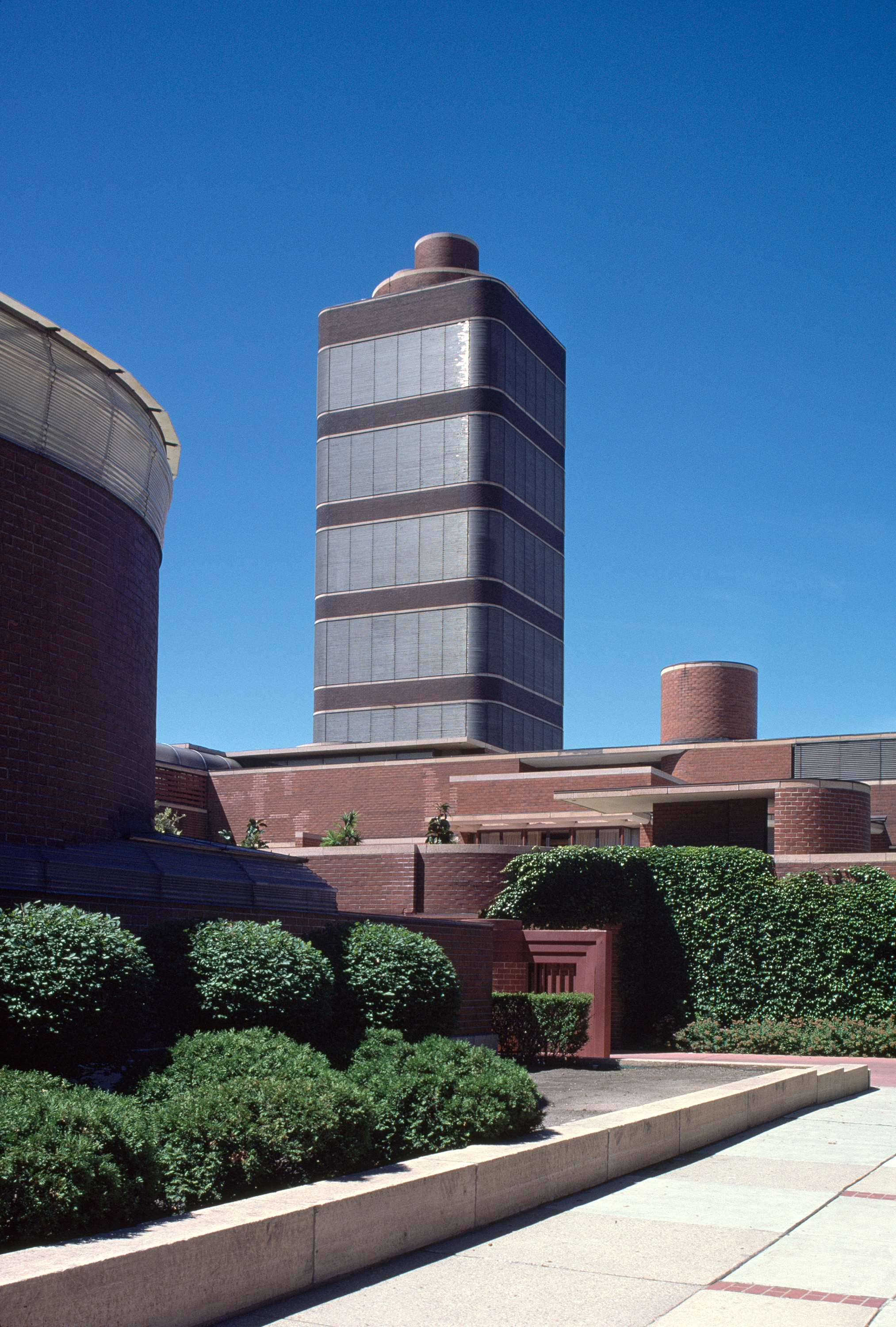
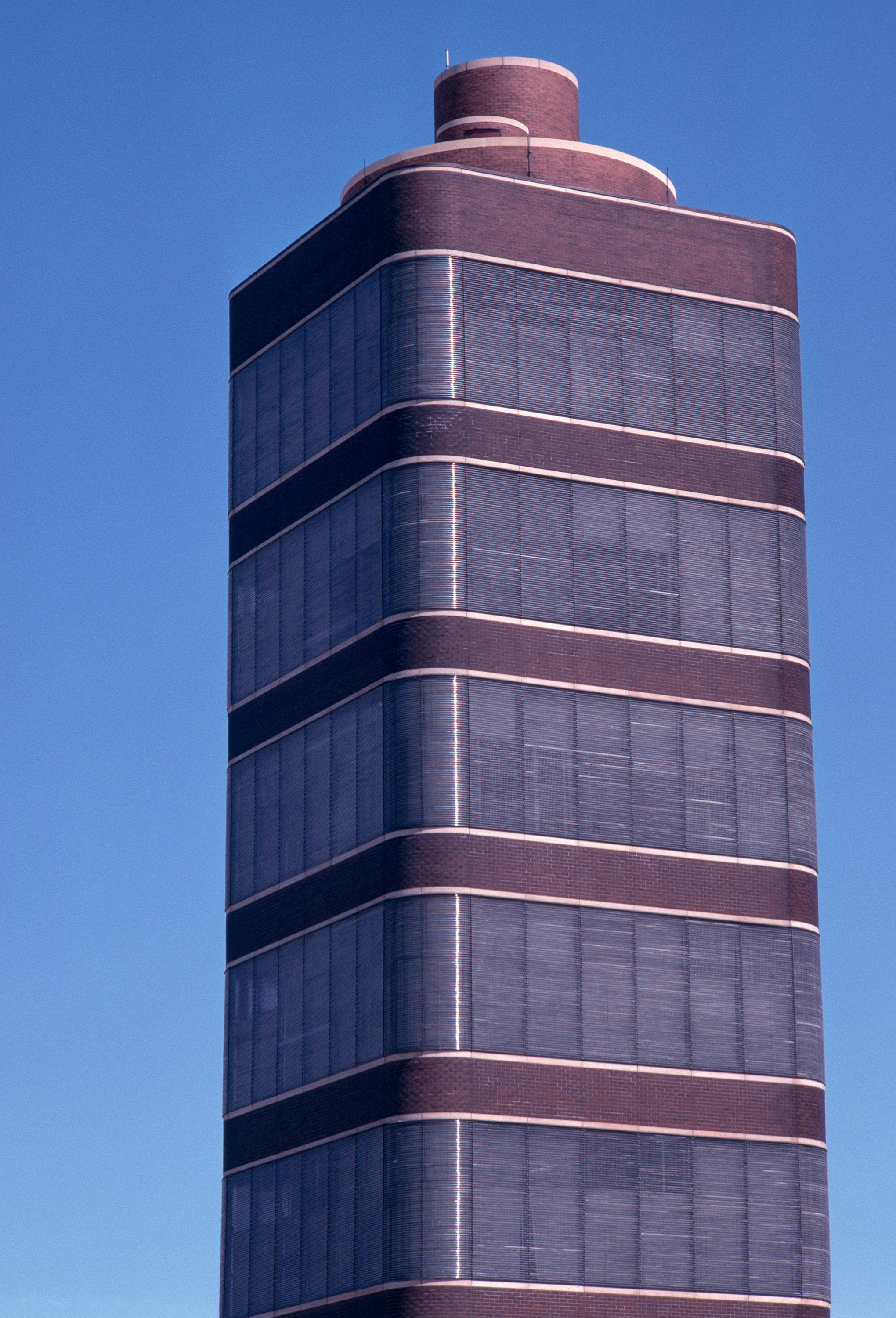
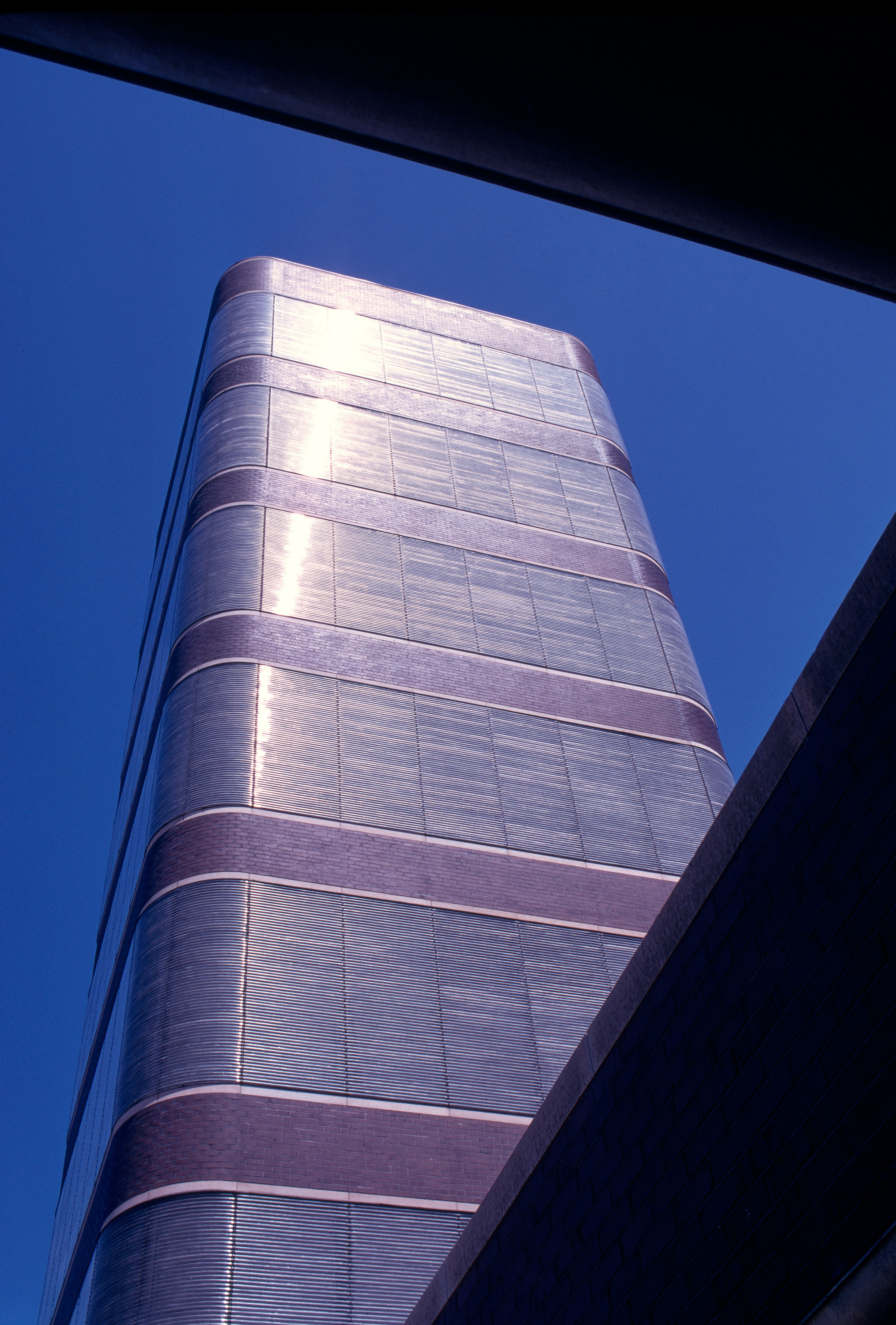
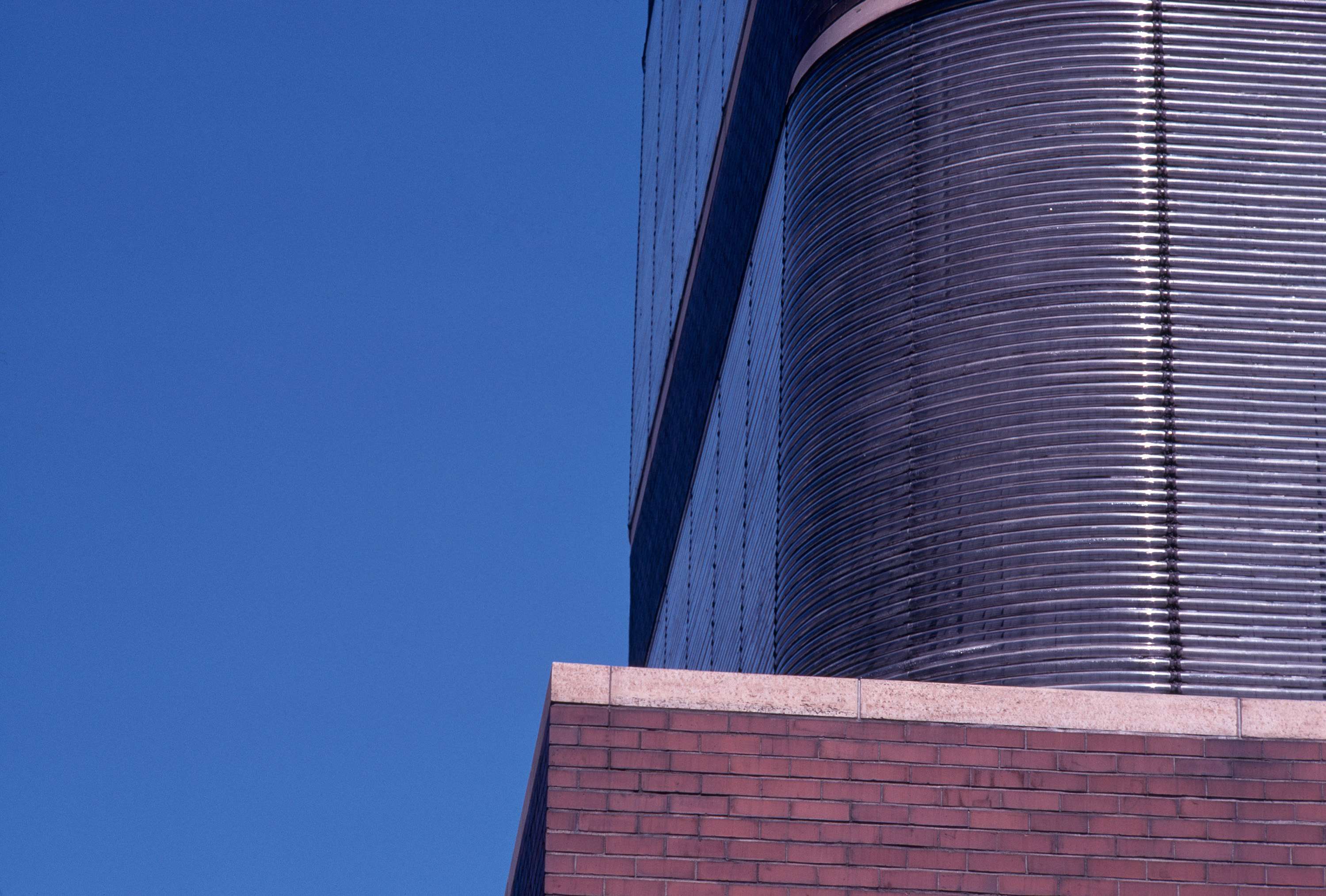
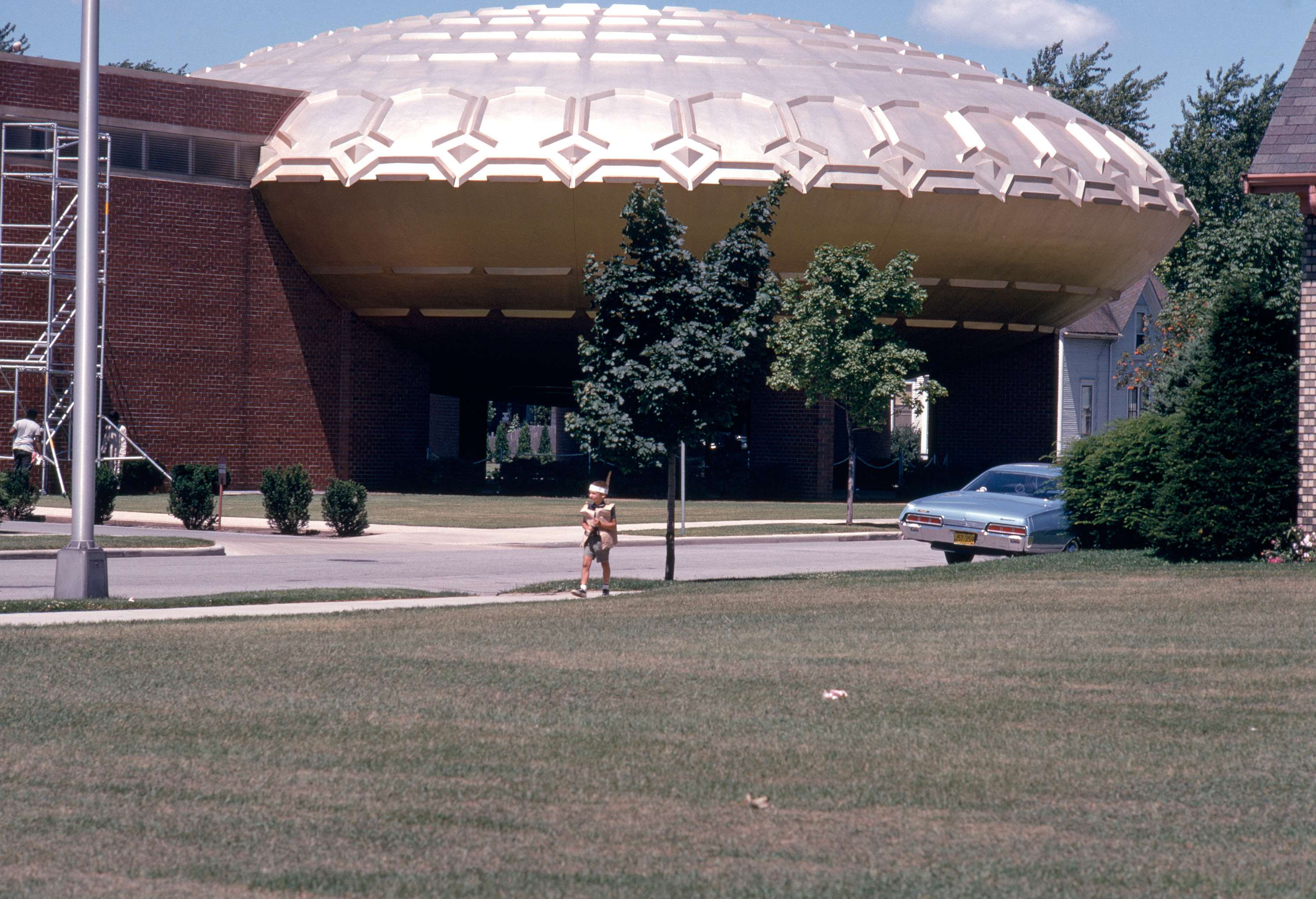
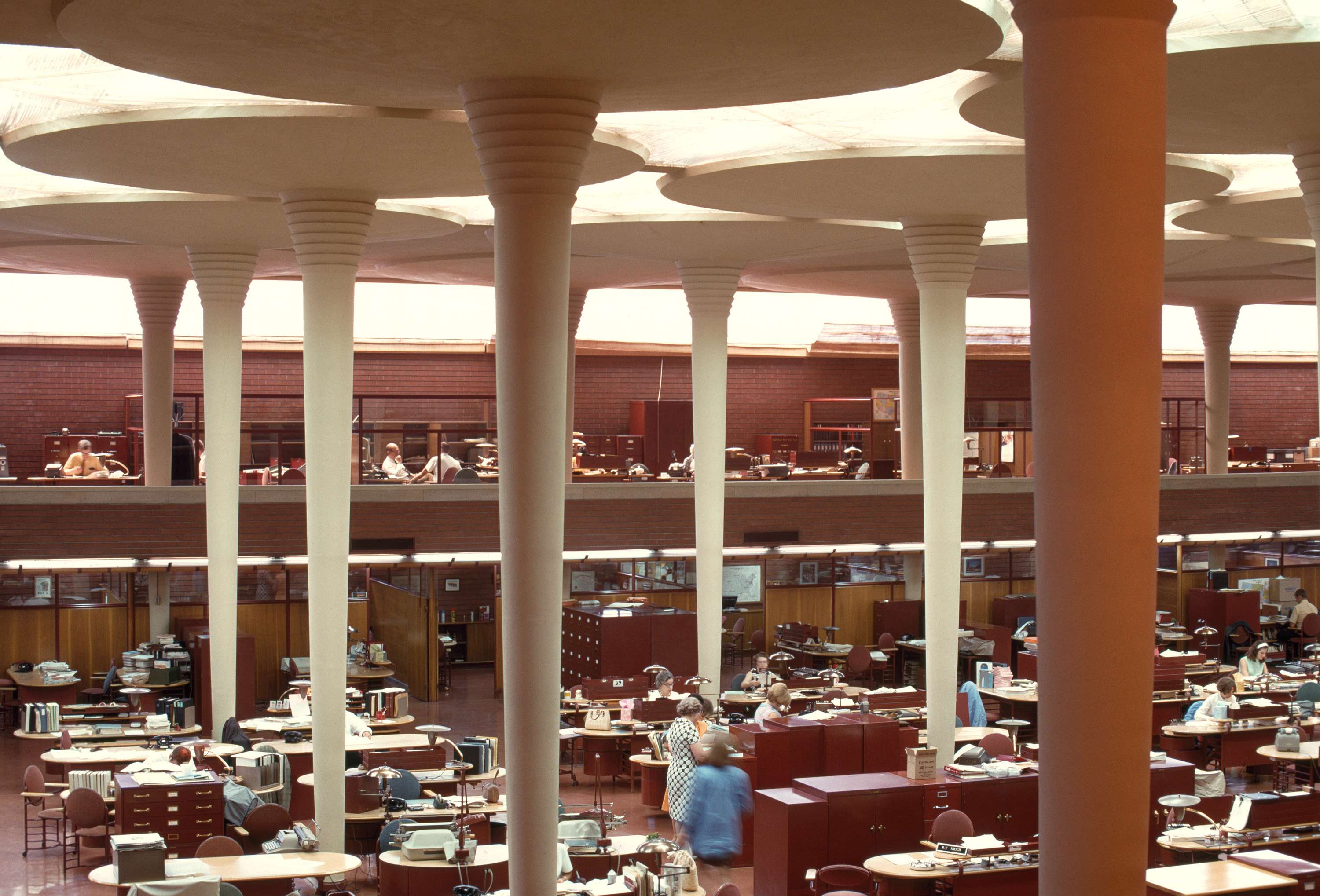
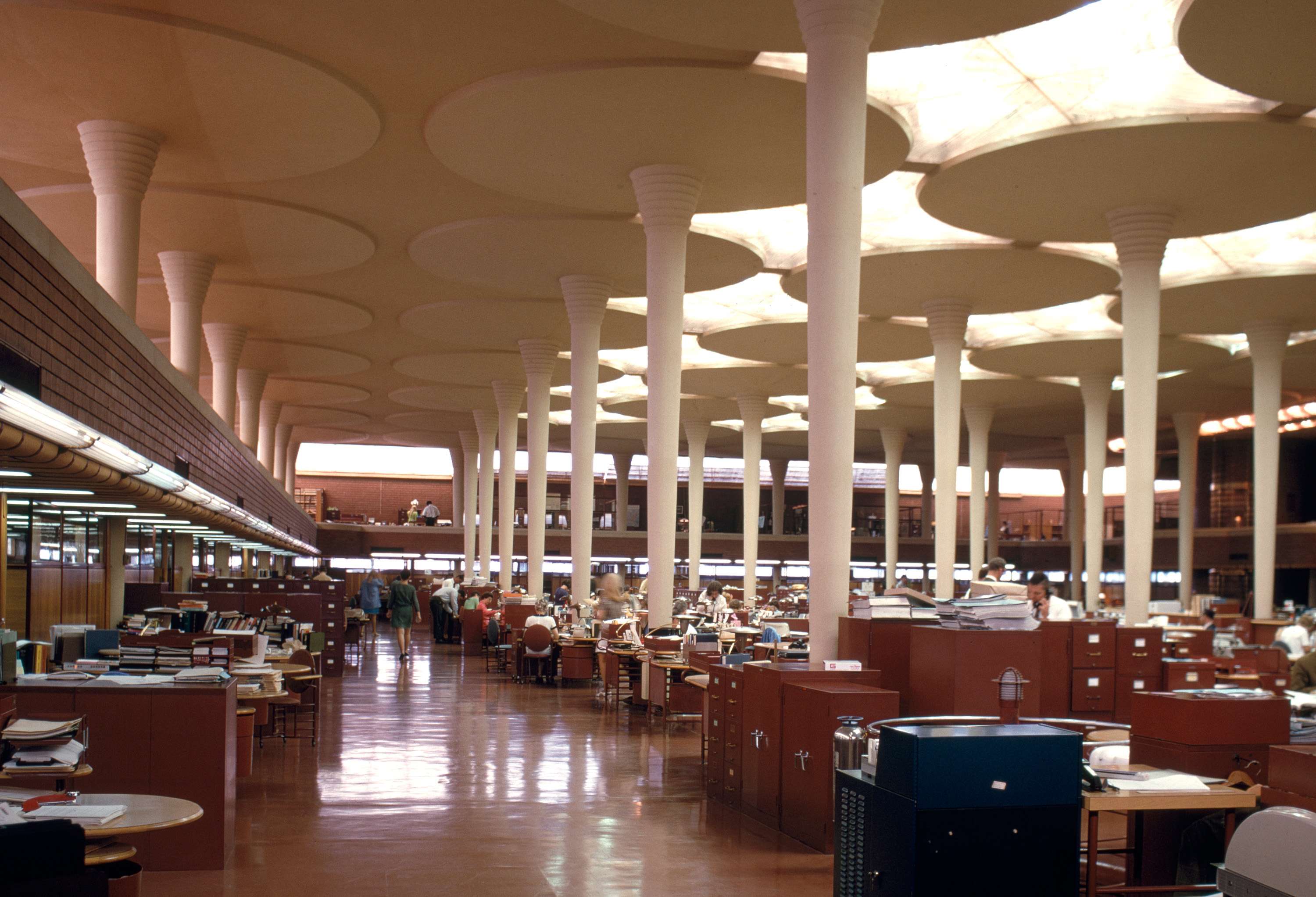
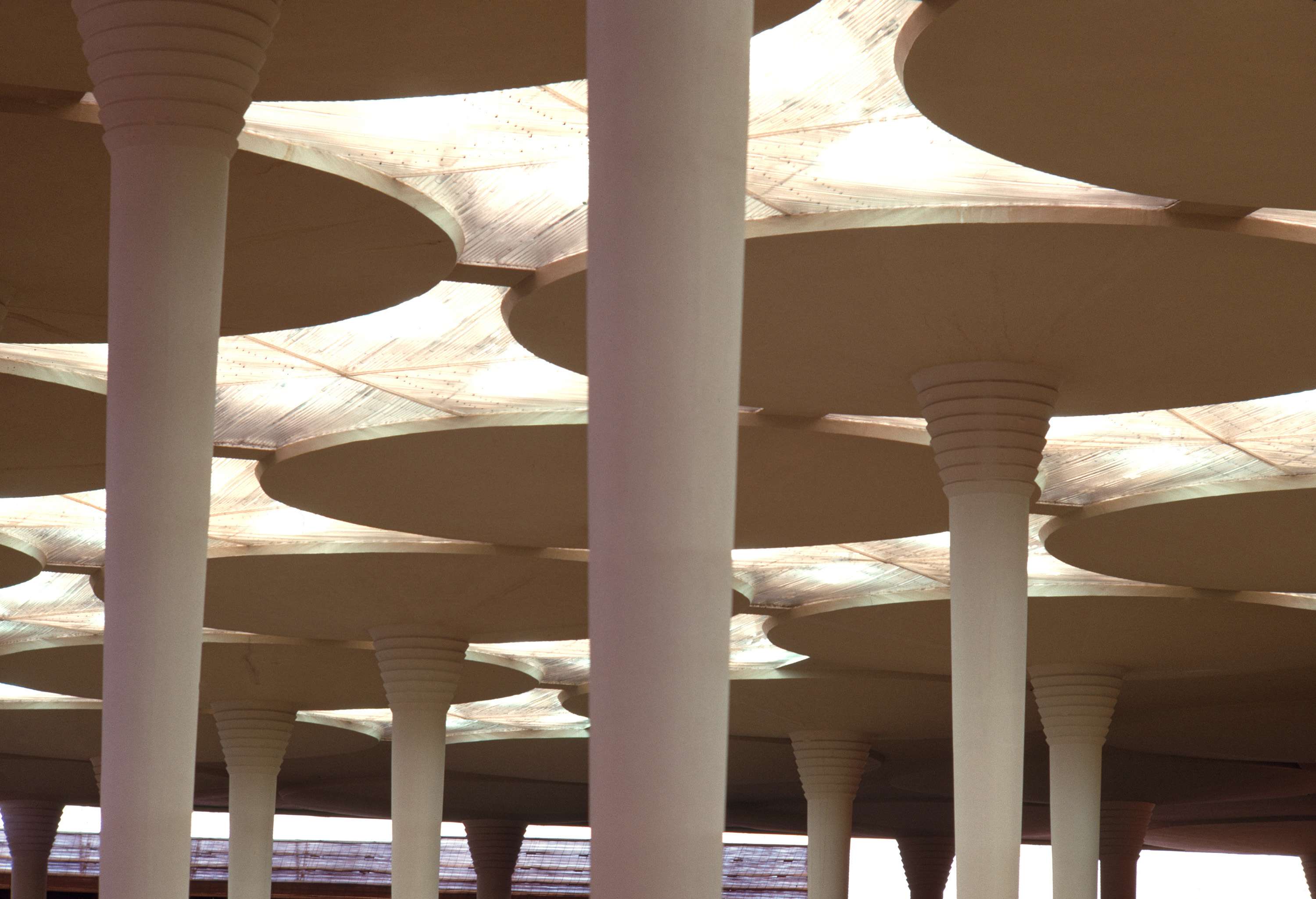
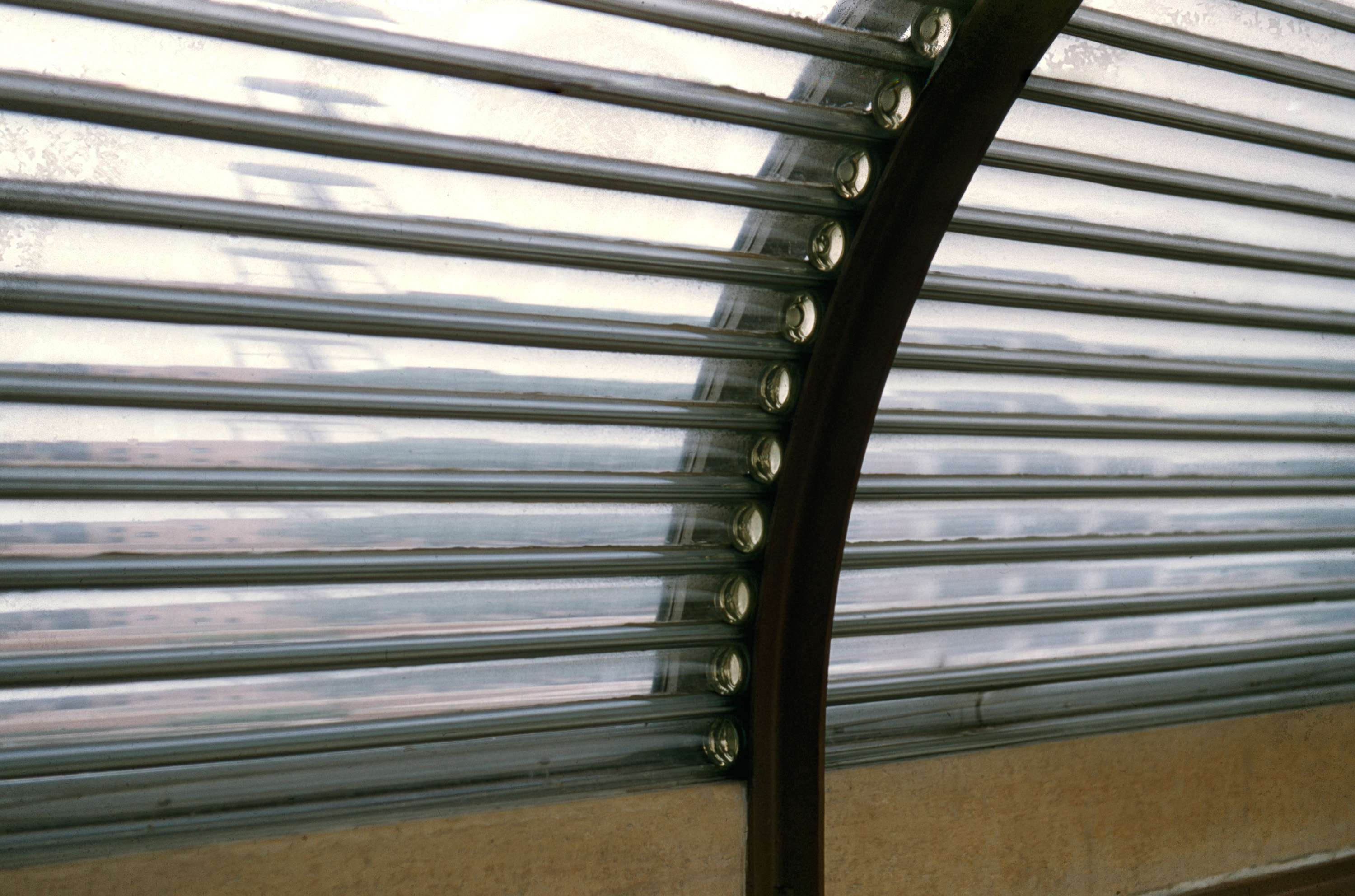
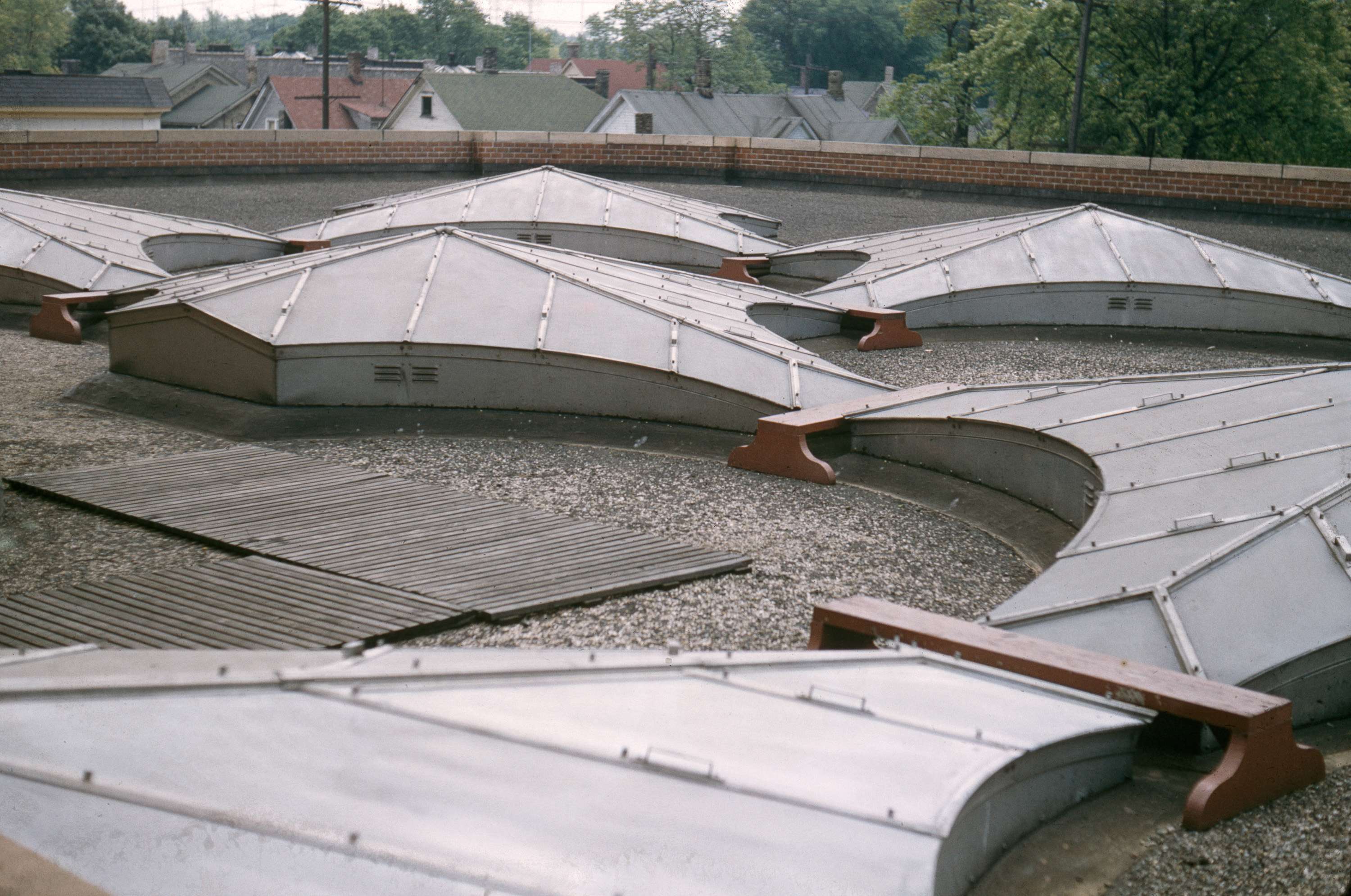
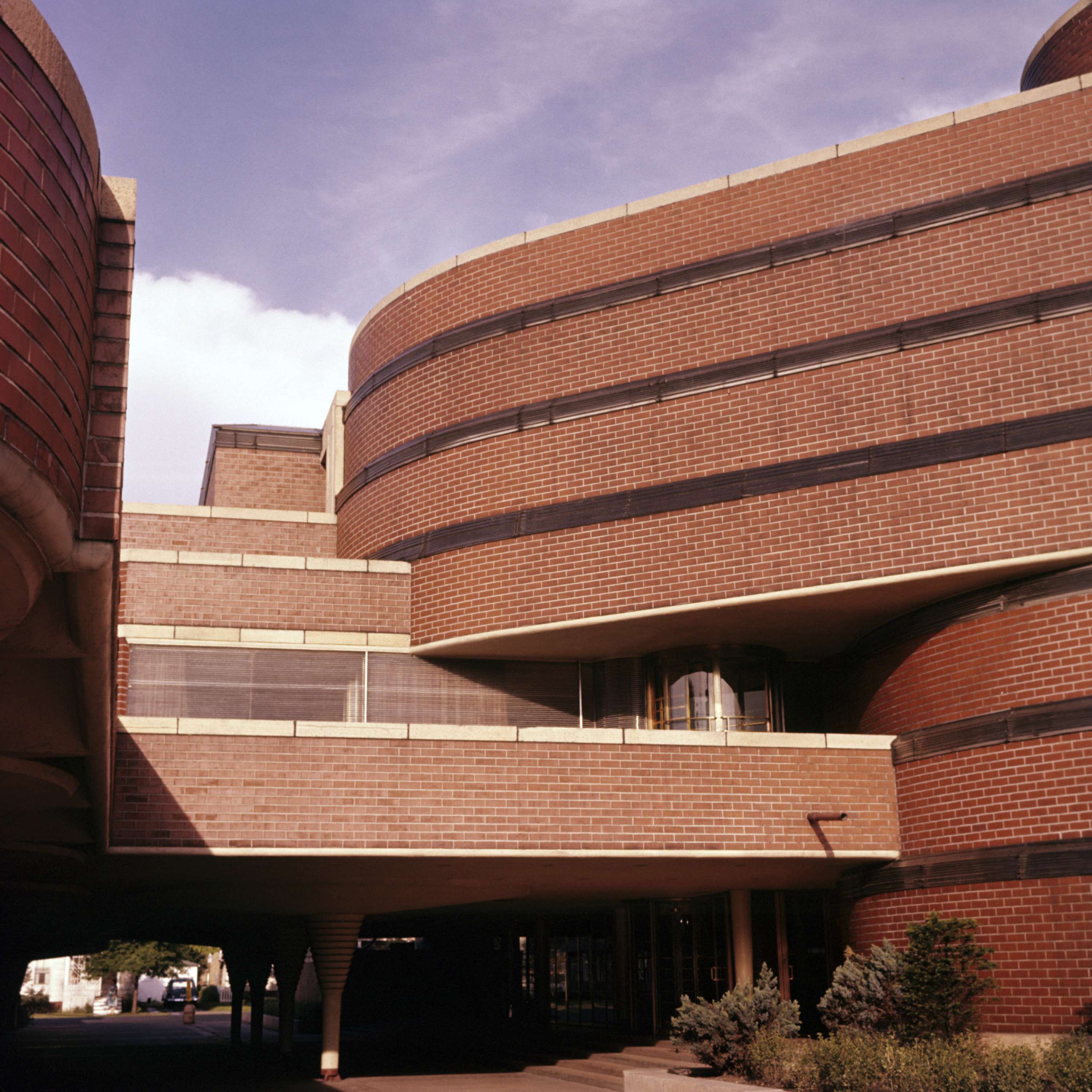
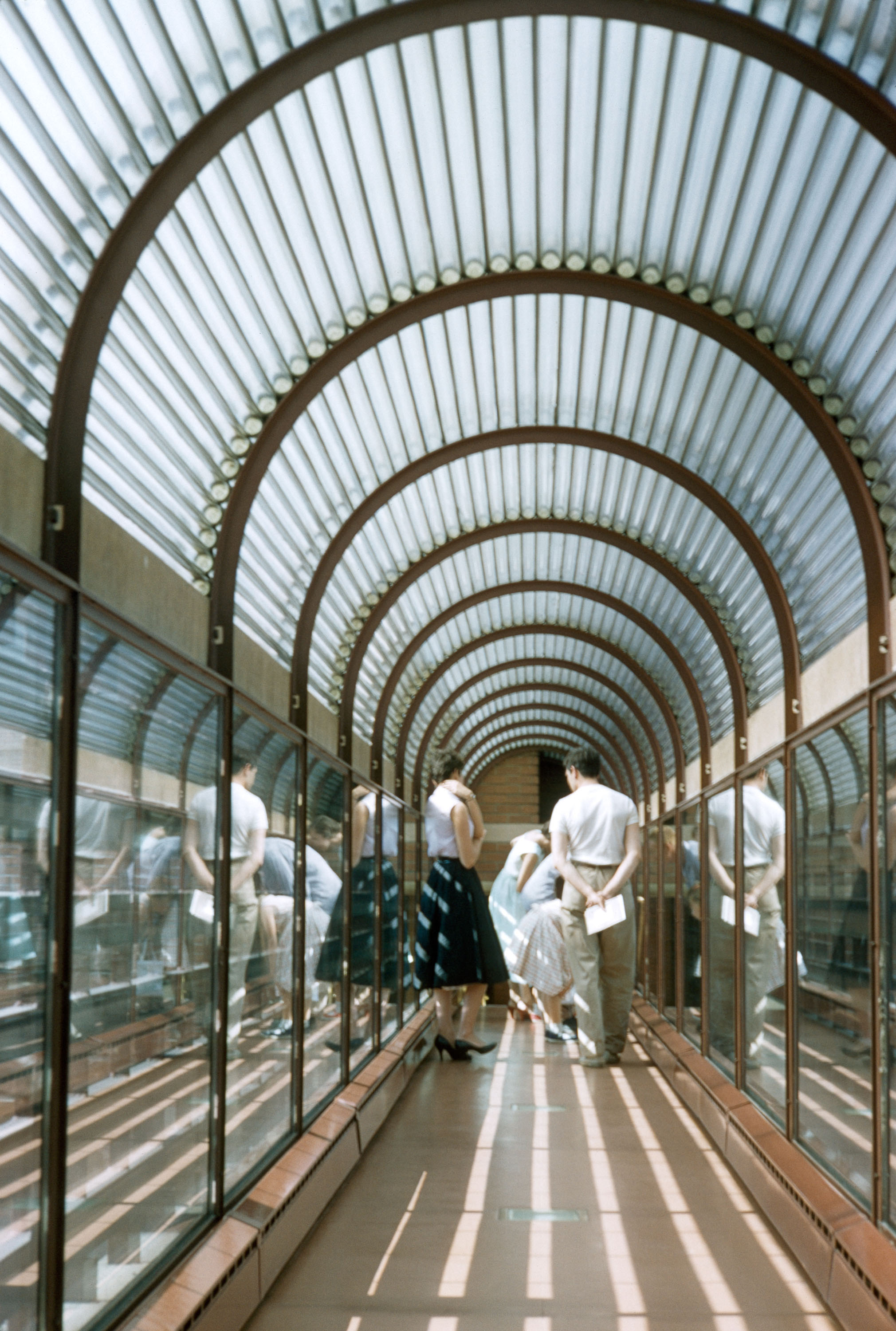
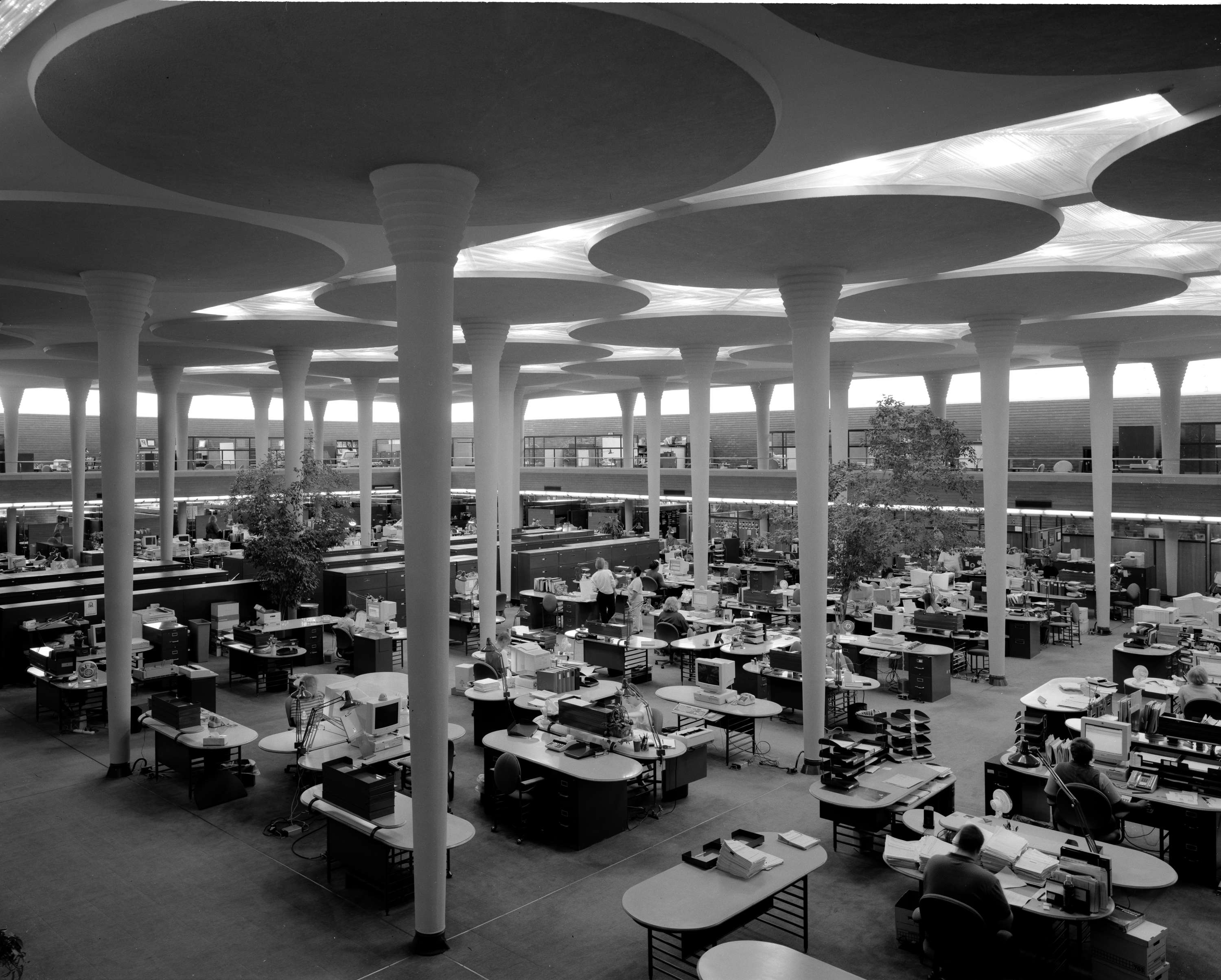
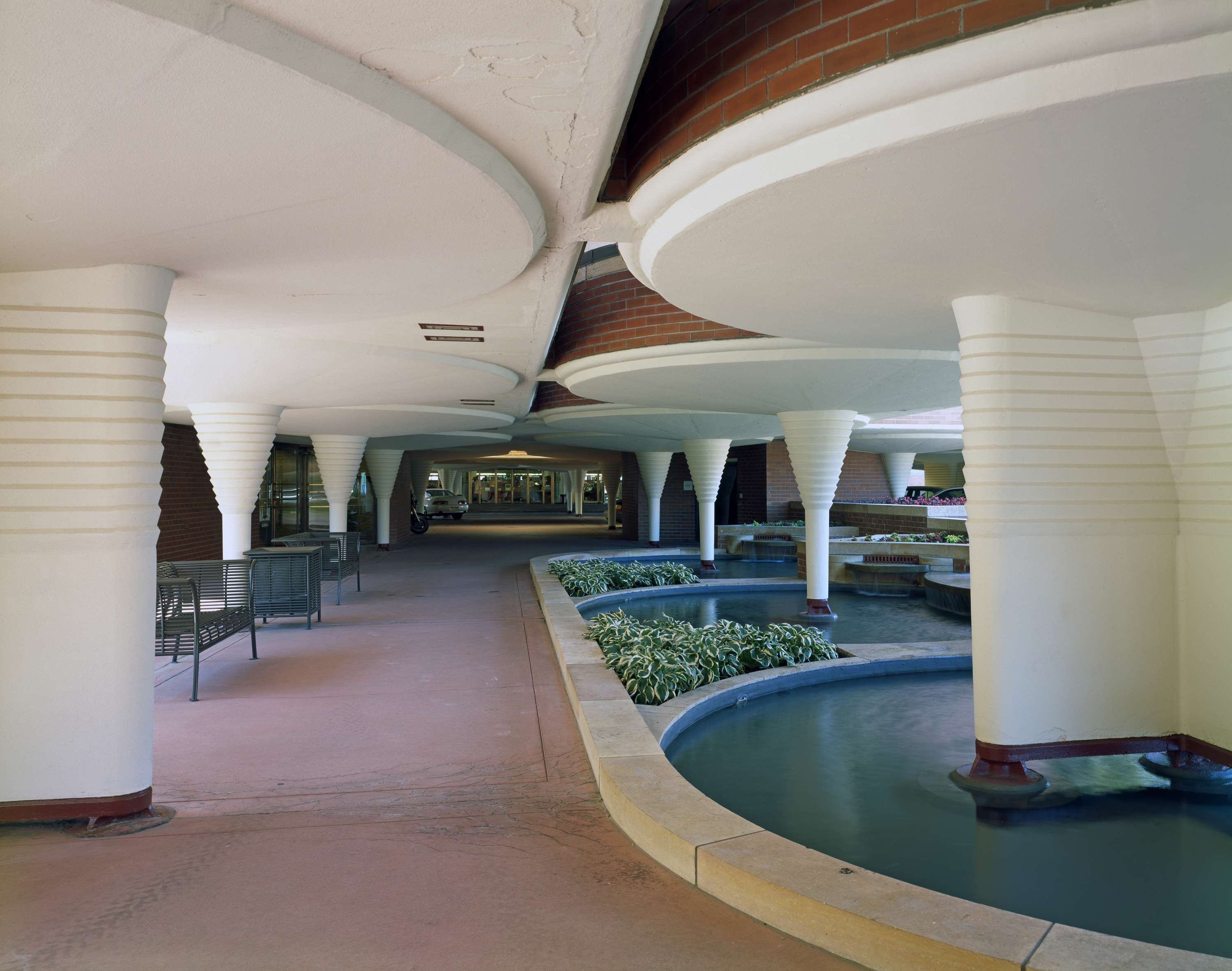
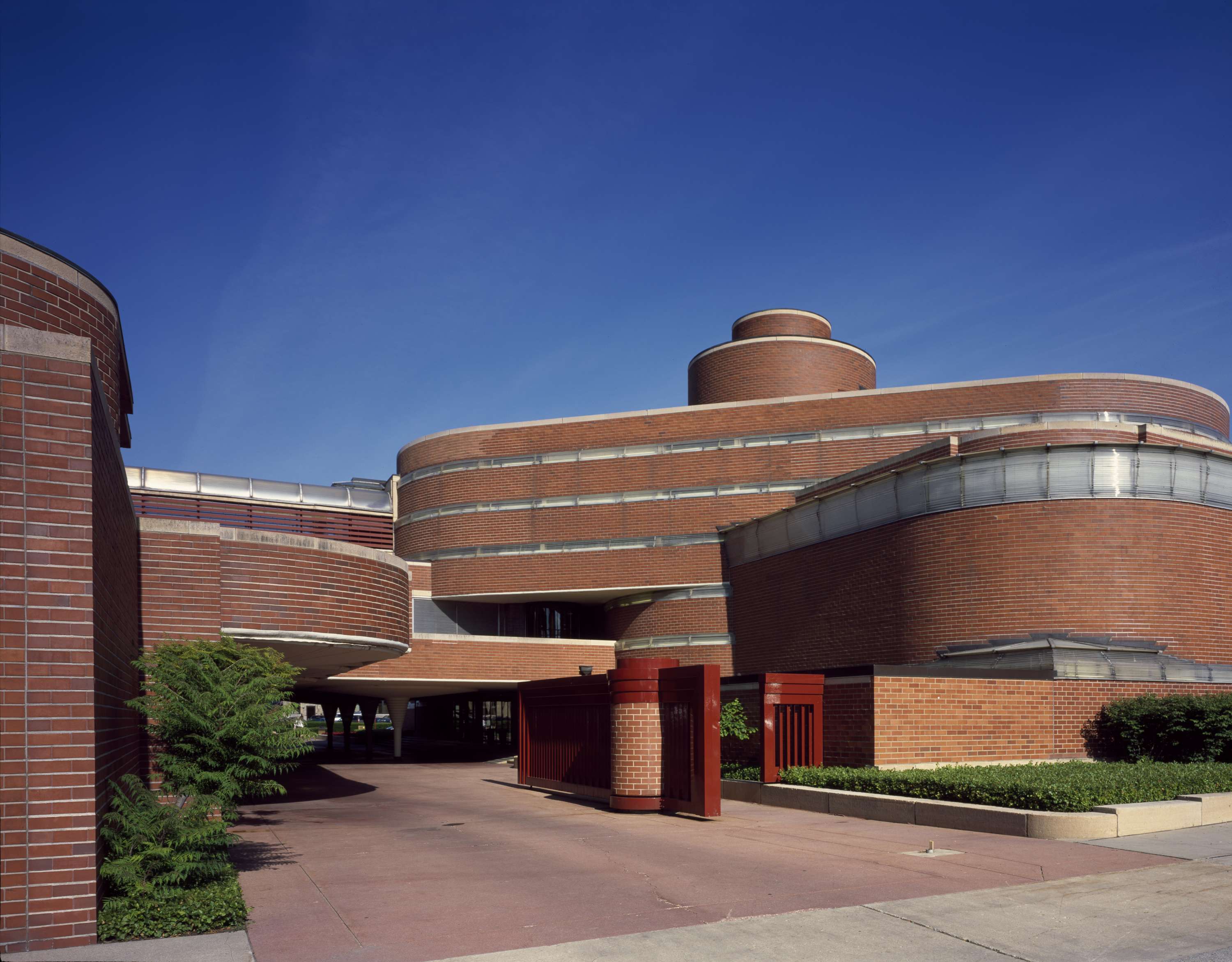
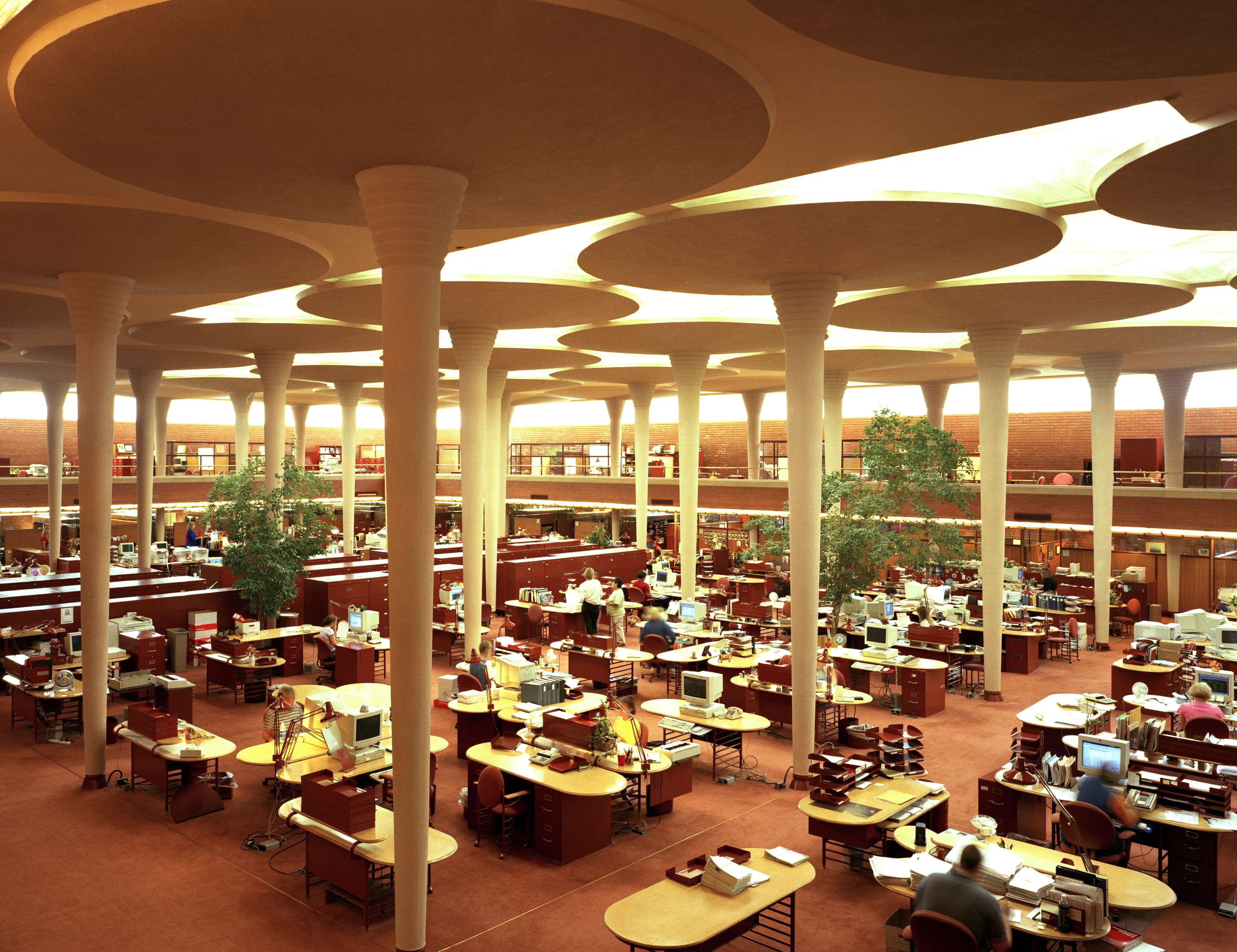
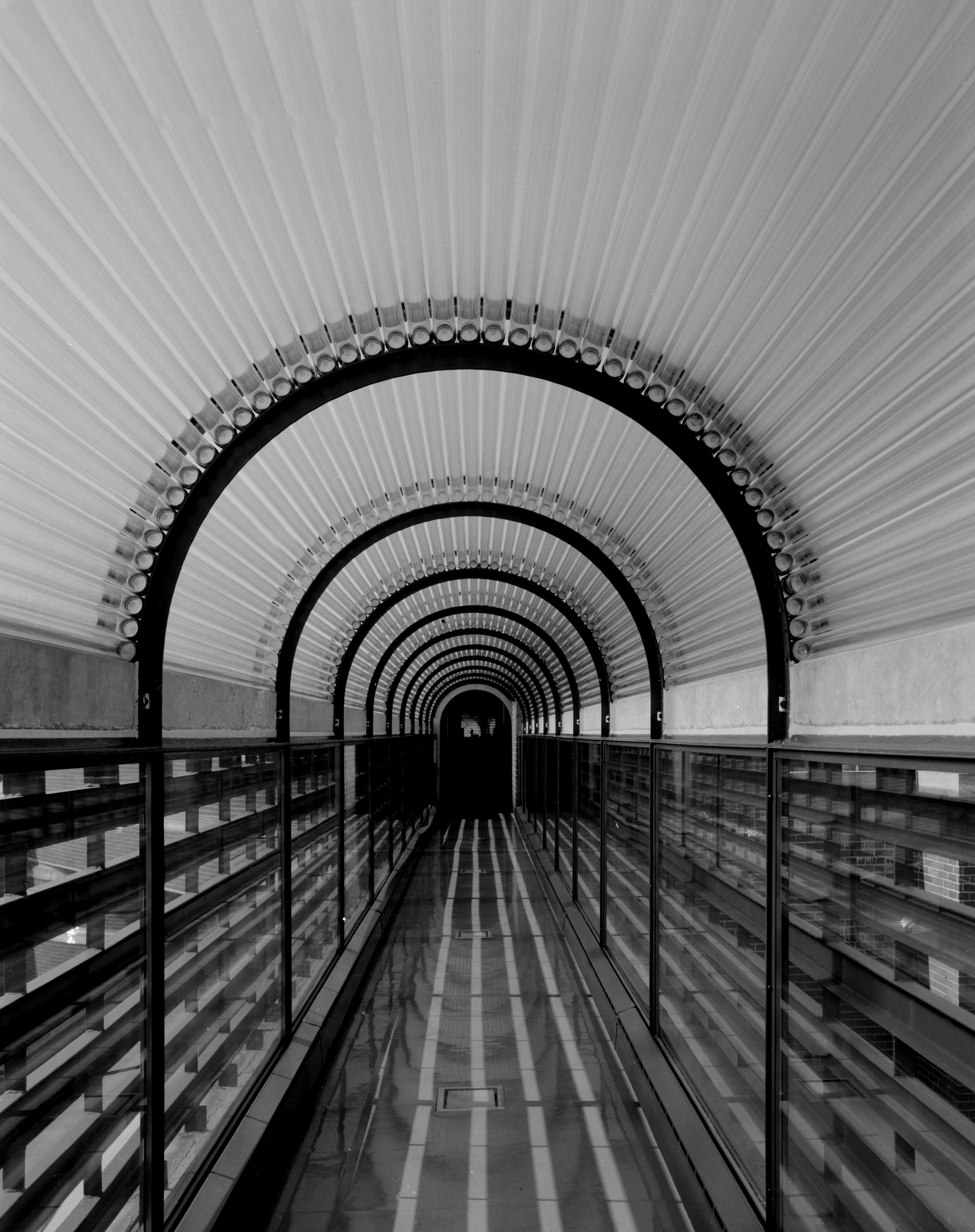
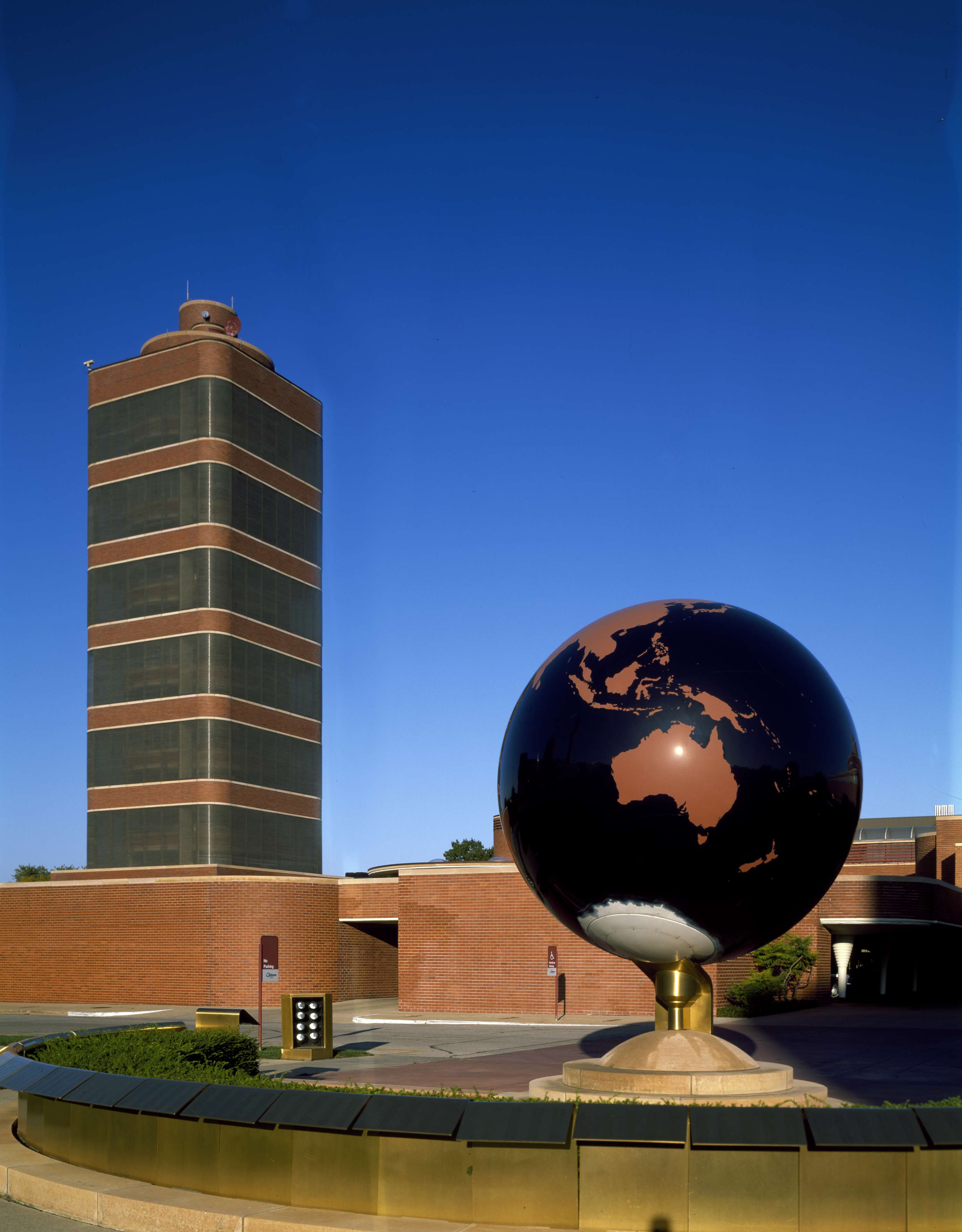
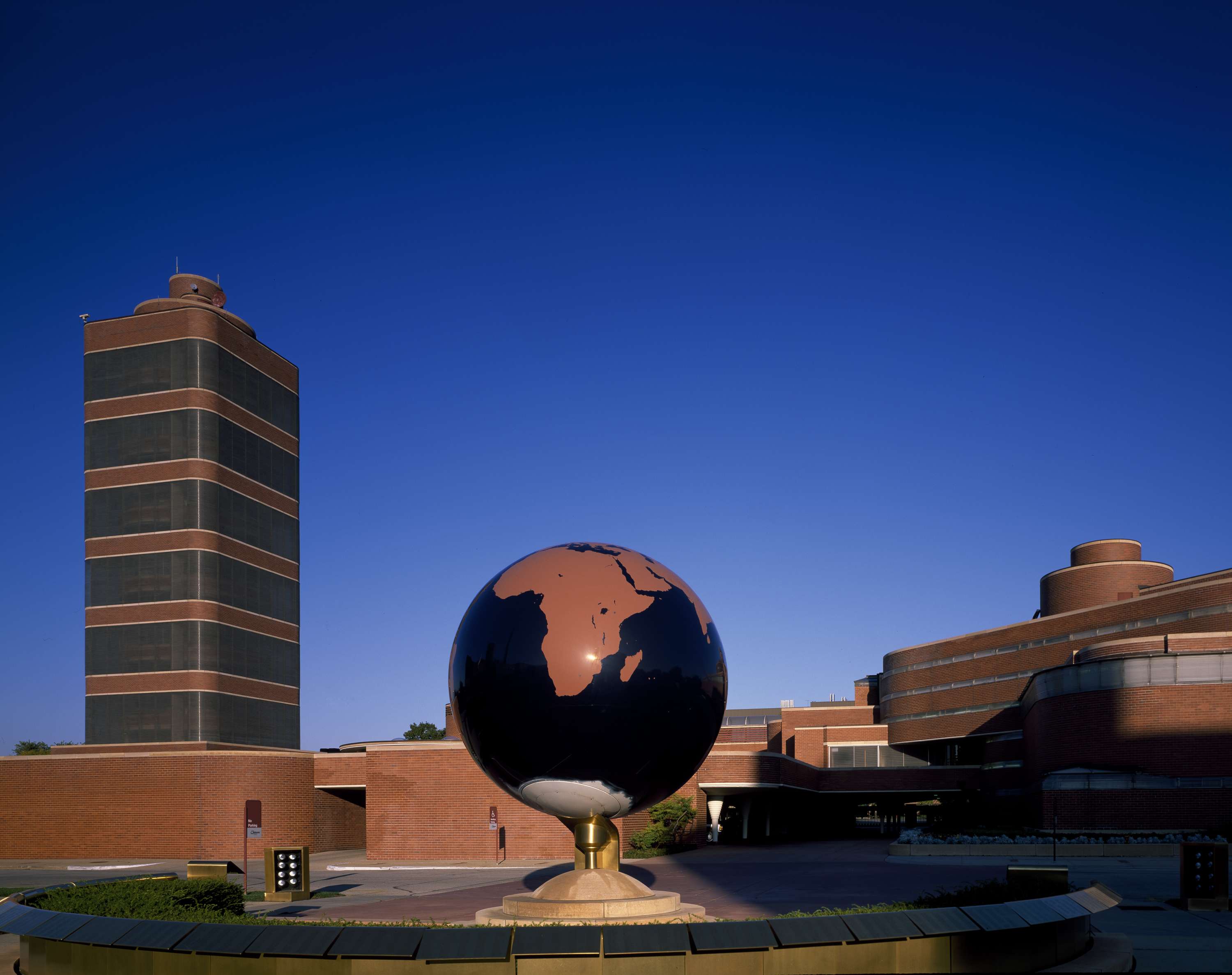
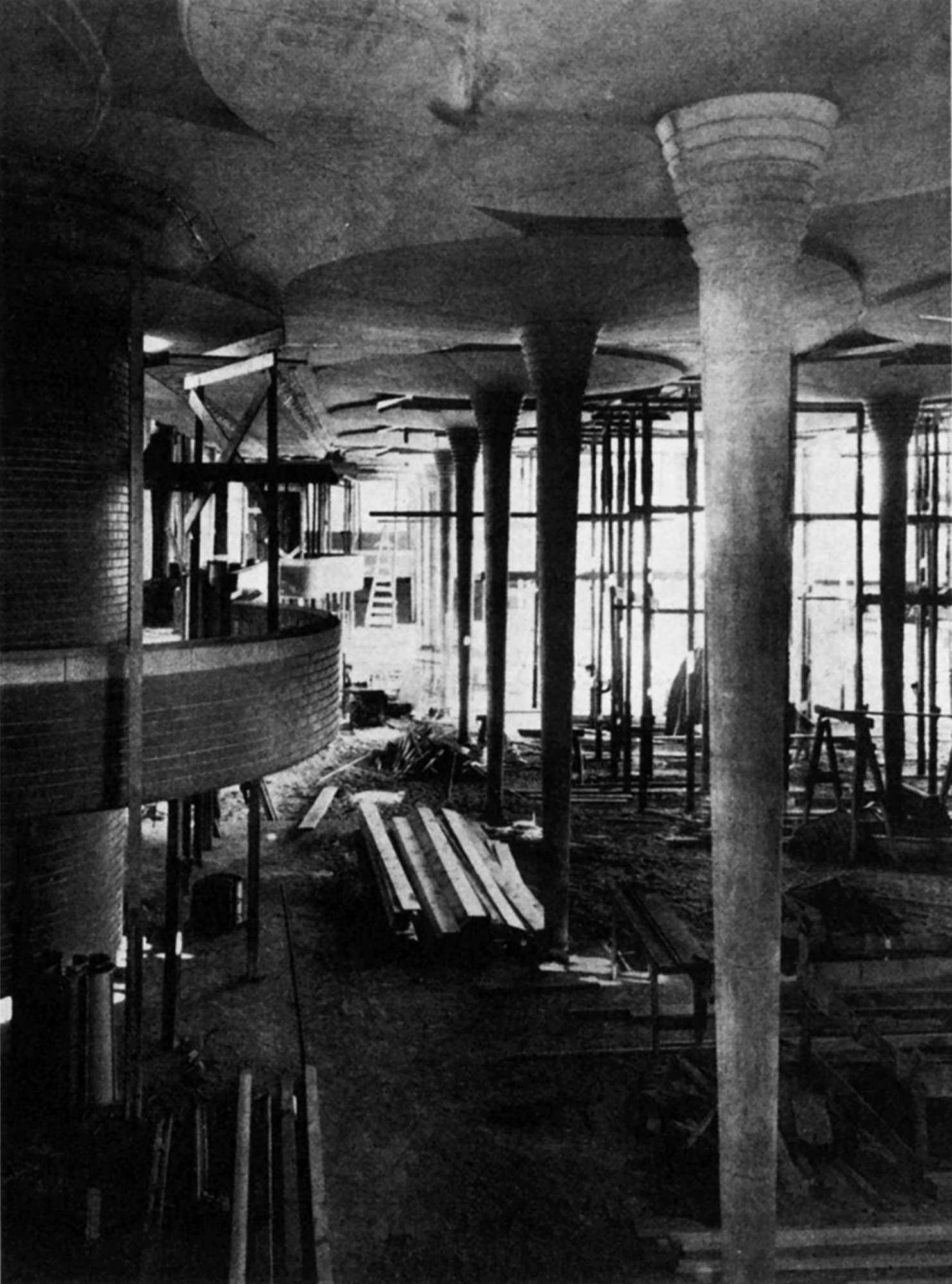
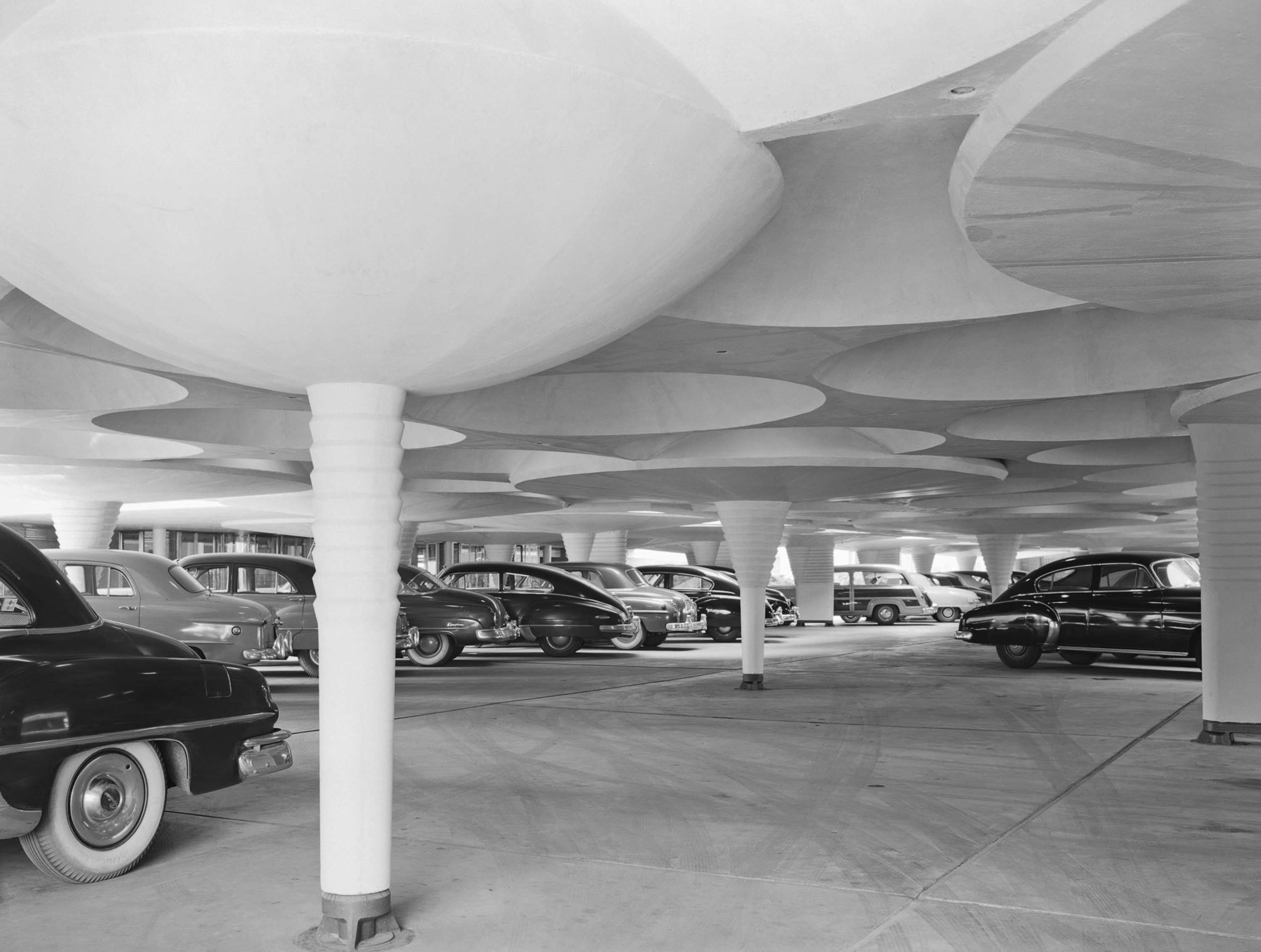
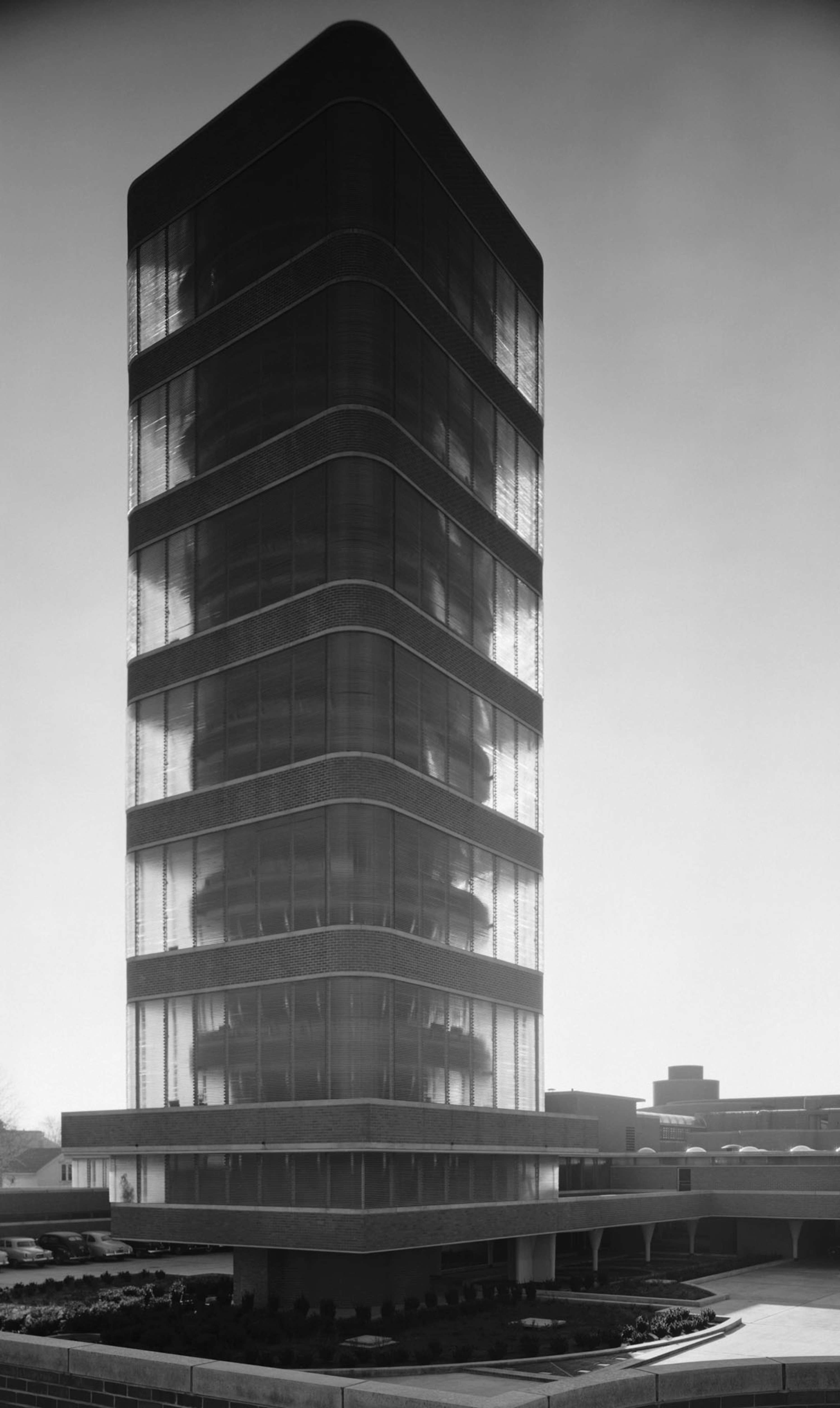
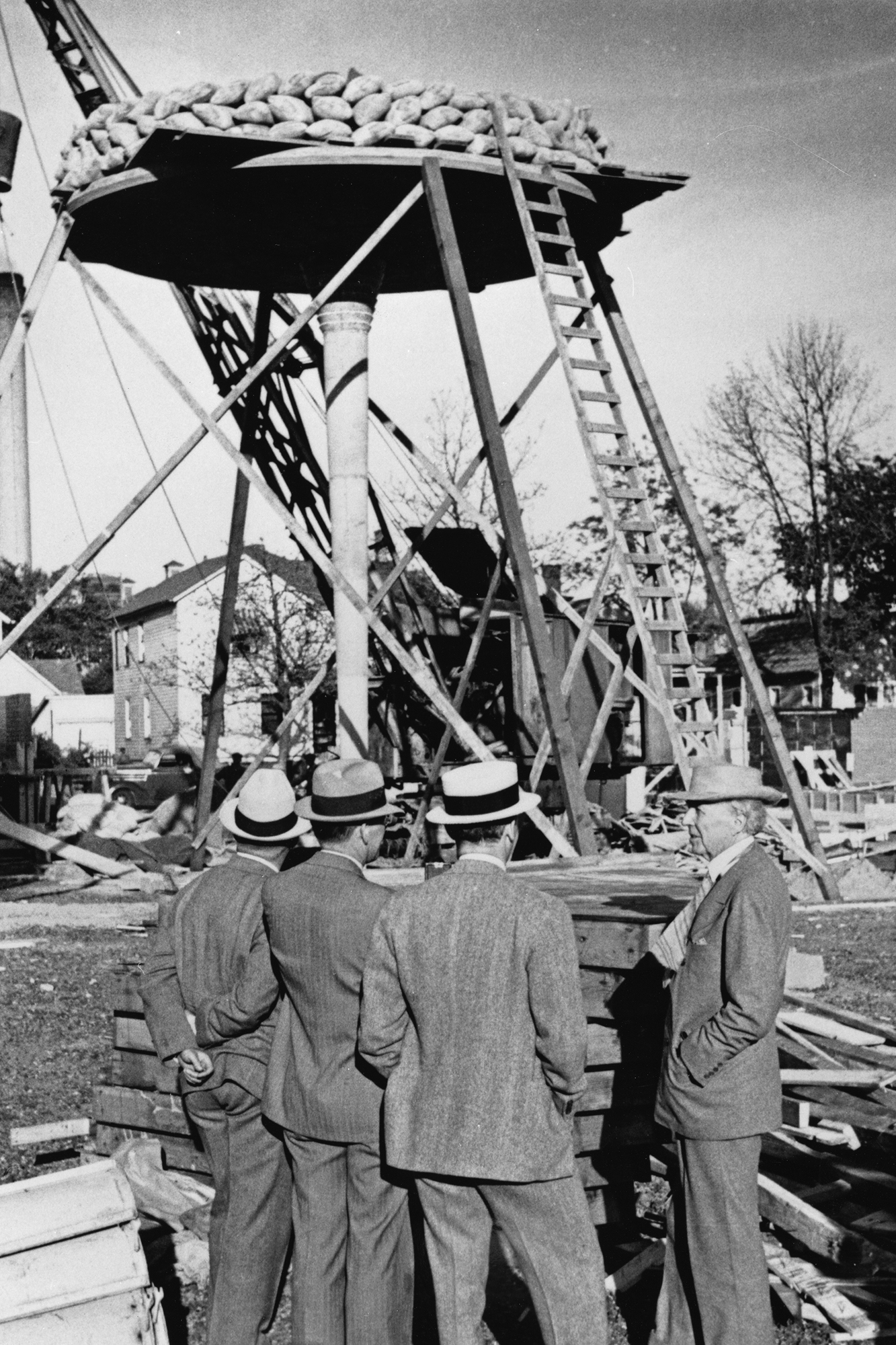
Lieu: Racine WI, USA
Type: Centre d’affaires, Centre de recherche
Client: S. C. Johnson & Son
Collaborator: Wesley W. Peters
Blueprints: Wright Auctions
Photography: Carol M. Highsmith (LOC) - G. E. Kidder Smith (MIT Libraries) - Ezra Stoller
Publié: Juin 2019
Catégorie: Architecture